ARCHIVE OF THE MONTH: JULY 2024
Student newspapers and magazines have long been an effective way for communicating the beliefs and opinions of the student body, not just about University matters, but also broader social, political and cultural issues. It’s from these publications that we get a real snapshot of student life and preoccupations at a specific point in time. The material really is a must-see for anyone researching the history of the student body of the University.
Our Archival collection comprises publications produced by University students, either officially through the Students’ Union, student societies or other groups of students.
The earliest publication we hold is ‘The Magazine of the University College of North Wales,’ (1891-1927). Written by students, for students, the Editors ensured the ‘Magazine’ served “mainly as a record of their activities and as a receptacle for their lucubrations.”
The Archives contains paper versions of the Official Welsh Newspaper of the University, ‘Ffenics’ (1962-1972) as well as ‘Y Llef’ (1978, 1982).
Our Society publications vary in nature. Some are course-related, such as the Agricultural Society Magazine (‘Agrix’), the Forestry Society Journal (‘Y Coedwigwr / The Forester’), and The Science Magazine of the Student Body of UCNW (‘Zenith’). Others are related to extra-curricular societies such as the Mountaineering Club (‘Y Geifr’, ‘Clogwyn’), or the publication ‘Spectrum’, an Arts magazine, profusely illustrated with poetry.
There are of course party-political publications, most of them fairly short lived, for example ‘The Bulletin’ (Socialist Society), ‘Yr Her’ (Plaid Cymru, Bangor University Branch), and departmental ones, which can provide unique information about local goings-on and personalities.
The practice of holding ‘Rag Weeks’ or ‘Rag days’ by students in universities to raise money for good causes goes back to the 1920s. The earliest ‘rag mag’ we have at Bangor is the 1931 edition, and the content blends cartoons and jokes with more long-form humorous pieces. By the late 1960s we see the evolution of humour within these publications. The social changes of the period are reflected in not just their design (very heavily influenced by pop art and comics) but also their content – their scurrilous nature provides evidence of the inequalities and attitudes very much of the time.
Rag Mags in our collection include ‘Pandamonium’, ‘Echins’, ‘The Official Rag Mag of UCNW’, ‘Tatters’ and ‘The Tonicle’.
We want to expand the University’s archive to help document the Bangor student voice and experience over time - having a richer, more diverse, and representative record of student life, societies, activism and community, will create a lasting historical resource for all.
Our collections still have many gaps, so we would like to appeal to anyone who thinks they might have something that’s missing from our current holdings, and might be willing to part with it, to get in touch with us. We’d love to hear from you!
archives@bangor This ‘Archive of the Month’ feature was created by Lynette Williams, Senior Archivist

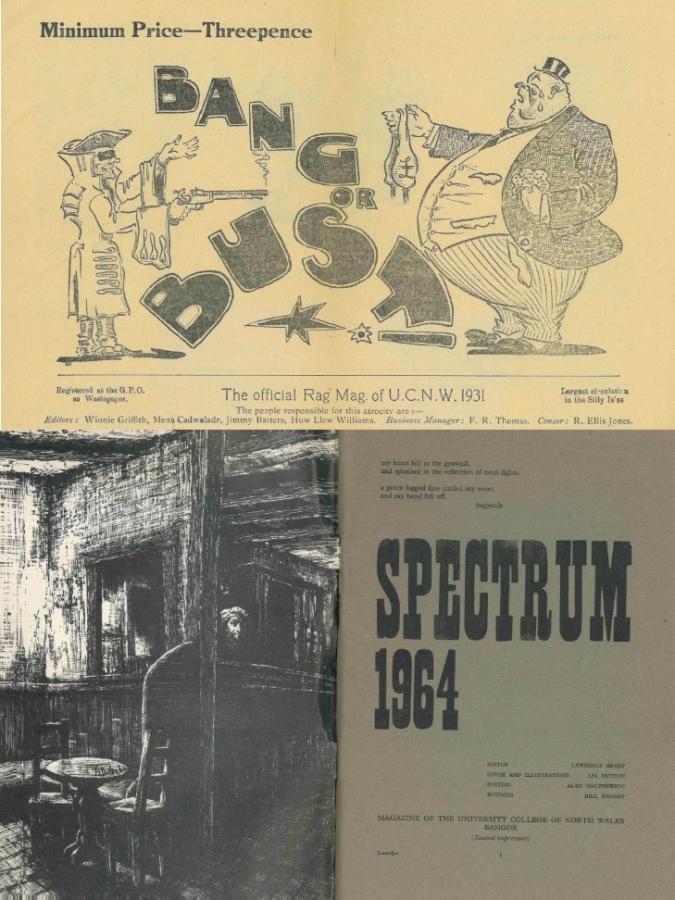

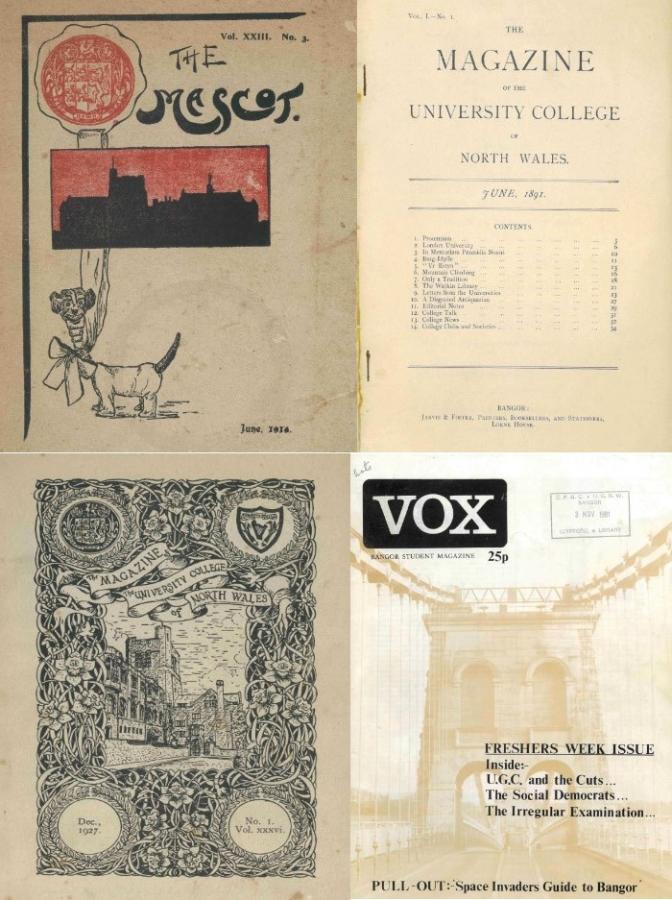
ARCHIVE OF THE MONTH: JULY 2024
UCNW Student Magazines
Student newspapers and magazines have long been an effective way for communicating the beliefs and opinions of the student body, not just about University matters, but also broader social, political and cultural issues. It’s from these publications that we get a real snapshot of student life and preoccupations at a specific point in time. The material really is a must-see for anyone researching the history of the student body of the University.
Our Archival collection comprises publications produced by University students, either officially through the Students’ Union, student societies or other groups of students.
The earliest publication we hold is ‘The Magazine of the University College of North Wales,’ (1891-1927). Written by students, for students, the Editors ensured the ‘Magazine’ served “mainly as a record of their activities and as a receptacle for their lucubrations.”
The Archives contains paper versions of the Official Welsh Newspaper of the University, ‘Ffenics’ (1962-1972) as well as ‘Y Llef’ (1978, 1982).
Our Society publications vary in nature. Some are course-related, such as the Agricultural Society Magazine (‘Agrix’), the Forestry Society Journal (‘Y Coedwigwr / The Forester’), and The Science Magazine of the Student Body of UCNW (‘Zenith’). Others are related to extra-curricular societies such as the Mountaineering Club (‘Y Geifr’, ‘Clogwyn’), or the publication ‘Spectrum’, an Arts magazine, profusely illustrated with poetry.
There are of course party-political publications, most of them fairly short lived, for example ‘The Bulletin’ (Socialist Society), ‘Yr Her’ (Plaid Cymru, Bangor University Branch), and departmental ones, which can provide unique information about local goings-on and personalities.
The practice of holding ‘Rag Weeks’ or ‘Rag days’ by students in universities to raise money for good causes goes back to the 1920s. The earliest ‘rag mag’ we have at Bangor is the 1931 edition, and the content blends cartoons and jokes with more long-form humorous pieces. By the late 1960s we see the evolution of humour within these publications. The social changes of the period are reflected in not just their design (very heavily influenced by pop art and comics) but also their content – their scurrilous nature provides evidence of the inequalities and attitudes very much of the time.
Rag Mags in our collection include ‘Pandamonium’, ‘Echins’, ‘The Official Rag Mag of UCNW’, ‘Tatters’ and ‘The Tonicle’.
We want to expand the University’s archive to help document the Bangor student voice and experience over time - having a richer, more diverse, and representative record of student life, societies, activism and community, will create a lasting historical resource for all.
Our collections still have many gaps, so we would like to appeal to anyone who thinks they might have something that’s missing from our current holdings, and might be willing to part with it, to get in touch with us. We’d love to hear from you!
archives@bangor This ‘Archive of the Month’ feature was created by Lynette Williams, Senior Archivist




ARCHIVE OF THE MONTH: JUNE 2024
Victorian Botanical Books Illustrated by Women in Bangor's Collections
The Victorian era was a time of profound change and progress. As the British Empire expanded, a wealth of new and exotic plants were located and shipped back from all over the world changing the look of the garden beyond recognition. These were the gardens of the growing middle class, often in suburban terraces or villas surrounded by small front and back gardens. Gardening manuals became in vogue and from this appeal a growing number of women took to botanical illustration.
Historically, women botanical artists were rarely given as much credit as their male counterparts. “It was sometimes thought that botanical illustration was only for ladies who dabbled in a spot of watercolors before ordering afternoon tea!” according to Nia Meleri Evans Amgueddfa Cymru. However, many of these ladies became trailblazers. These artists made a significant impact on our current understanding of botany. They also captured the incredible beauty of flowers and plants here are some examples found in books kept by Bangor University Archives and Special Collections.
Clara Maria Pope (nee Leigh) was a British painter and botanical artist. She was born in London, her actual date of birth is unknown, however, her christening date is recorded as 1767. Her father Jared Leigh was an amateur artist, and her first husband Francis Wheatley was also an artist. Her second husband Alexander Pope was an Irish actor and artist. This artistic background was central to her development which saw her exhibiting at the Royal Academy in 1796. Pope is best remembered for the work she produced for Samuel Curtis the publisher of the Botanical Magazine, especially the magnificent “Monograph on the Genus Camellia, 1819.” A copy of which can be found in Archives and Special Collection Bangor University.
A Monograph on the Genus Camellia, by Saml. Curtis ... The whole from original drawings by Clara Maria Pope.
Samuel Curtis; Weddell, engraver.; Pope, Clara Maria, artist. 1819. London: published by J. & A. Arch
Available at Science Rare Books Large (SB413.C18 C8 1819)

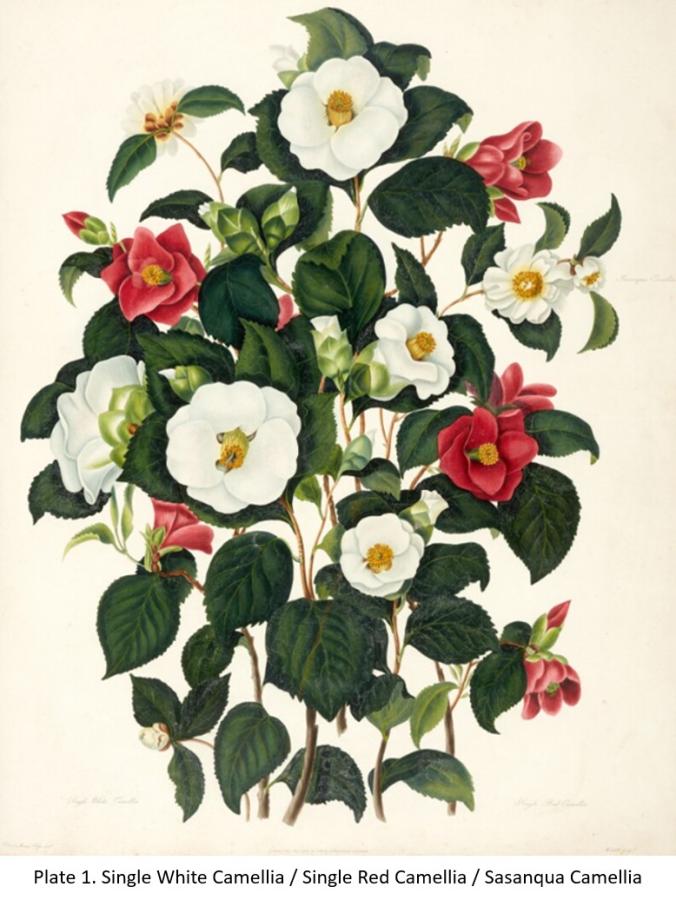
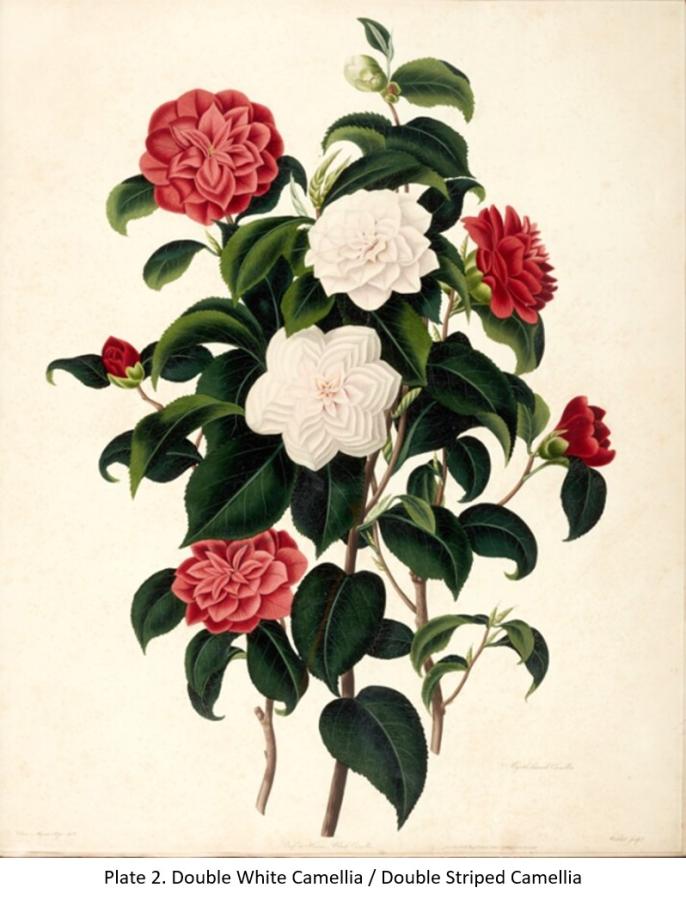
Jane Loudon
The ladies' flower-garden of ornamental bulbous plants by
Mrs Loudon; 1841. London : W. Smith, 113 Fleet Street
Jane Loudon (nee Webb) author, illustrator, and pioneer of science fiction was orphaned at the age of 17 at which point, in order to support herself she wrote” The Mummy”. She then went on to marry the respected landscape gardener John Claudius Loudon and together they wrote a few gardening books before she went on to write her very own highly successful series of garden books “Instructions in Gardening for Ladies” (1840), The Ladies Flower-Garden (1840) and Botany for Ladies (1842). These books were created specifically for women gardeners written using simple terms and offering helpful hints on how to affect the best outcome.
“The Ladies Flower-Garden of ornamental bulbous plants” was purchased by the University in June 1945 from Frederick Talfoud Jones and is part of The Talford Jones Collection, it can be found in Archives and Special Collection Bangor University.
Available at Science Rare Books Large (SB407.L817 1841)
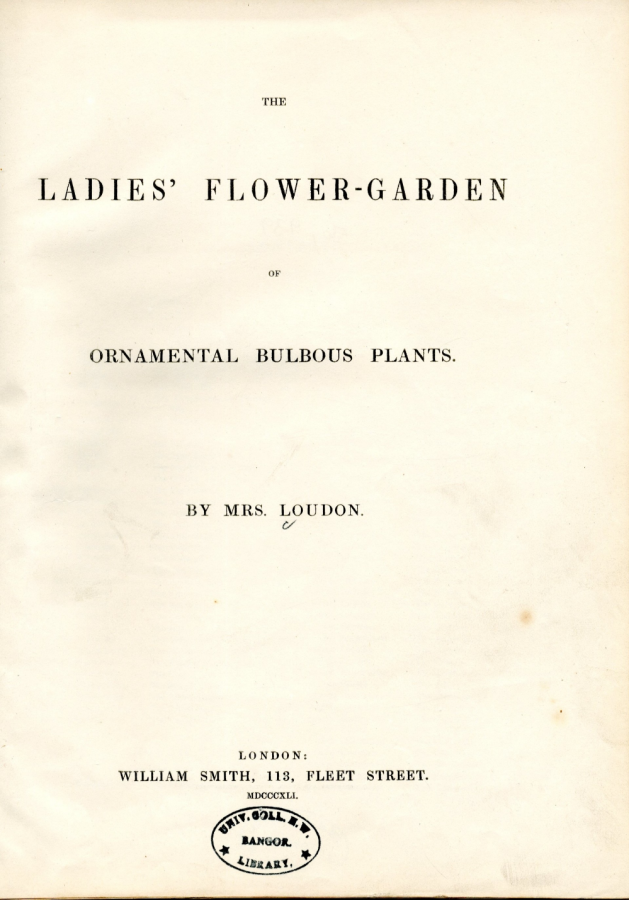

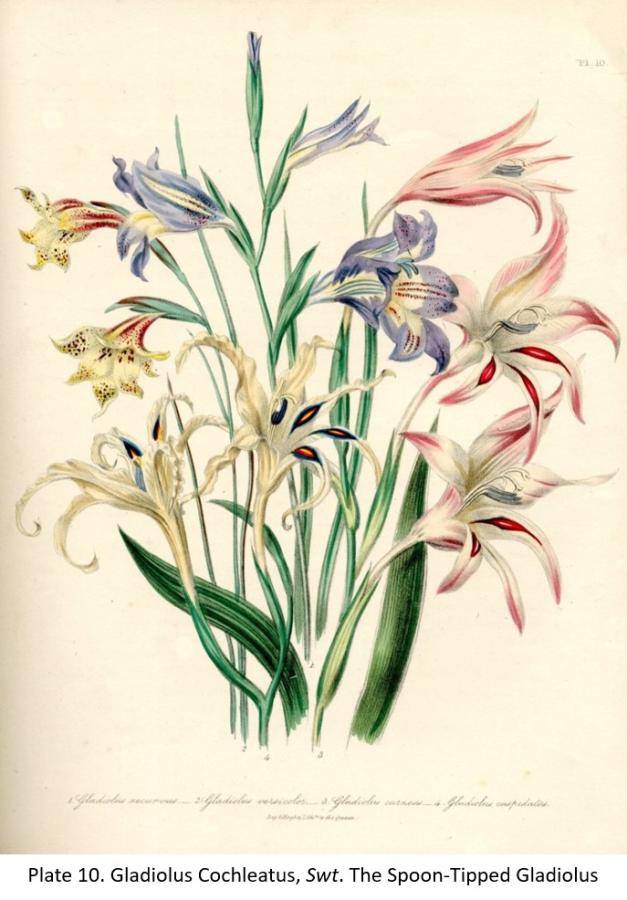
Sarah Ann Featon
Sarah Featon and her husband Edward Featon, published “The Art Album of New Zealand Flora” in 1889. This was the first full-colour art book published in New Zealand. The book Firmly grounded in science, also had popular appeal, was praised as a ‘colonial work of art. One of the reasons for producing the book was in order to quash the myth that New Zeland had no native flowers.
The book was donated to Bangor University in 1936 by W. R. Jones Esq. Solicitor, Amlwch. It can be found in Archives and Special Collection Bangor University.
Available at Science Rare Books Large (QK460.F43)
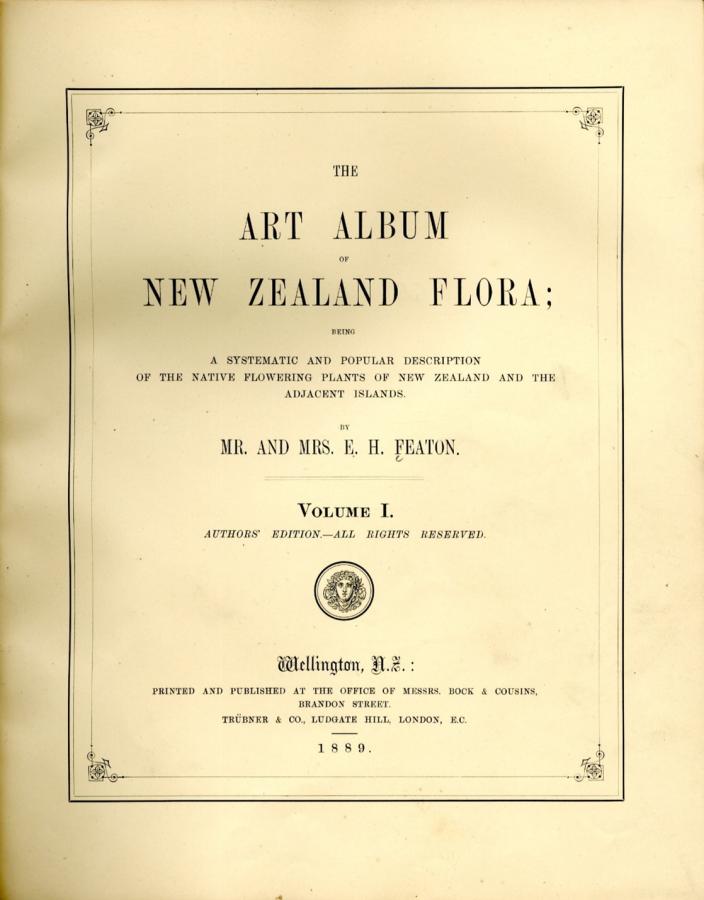
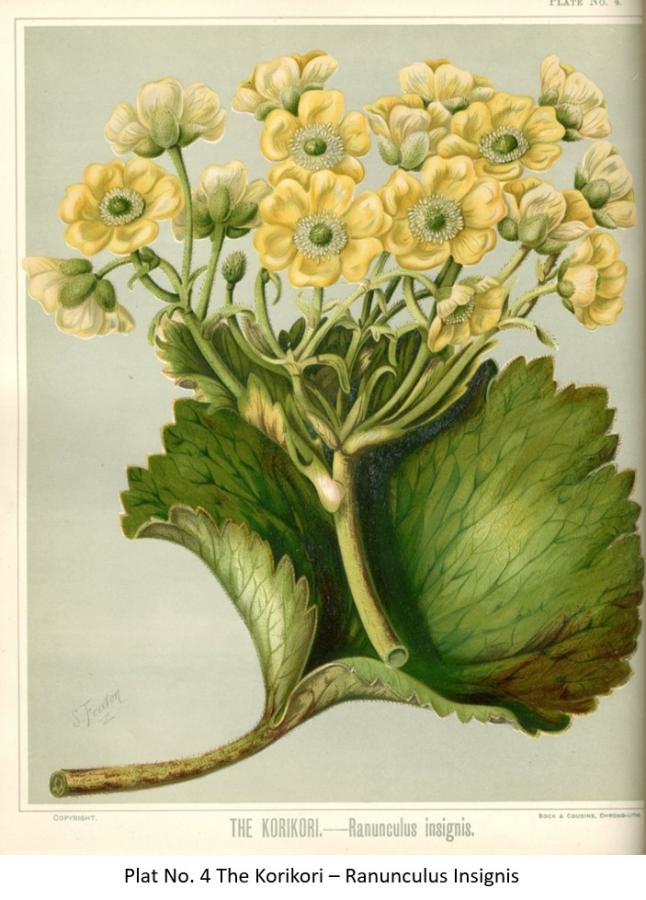
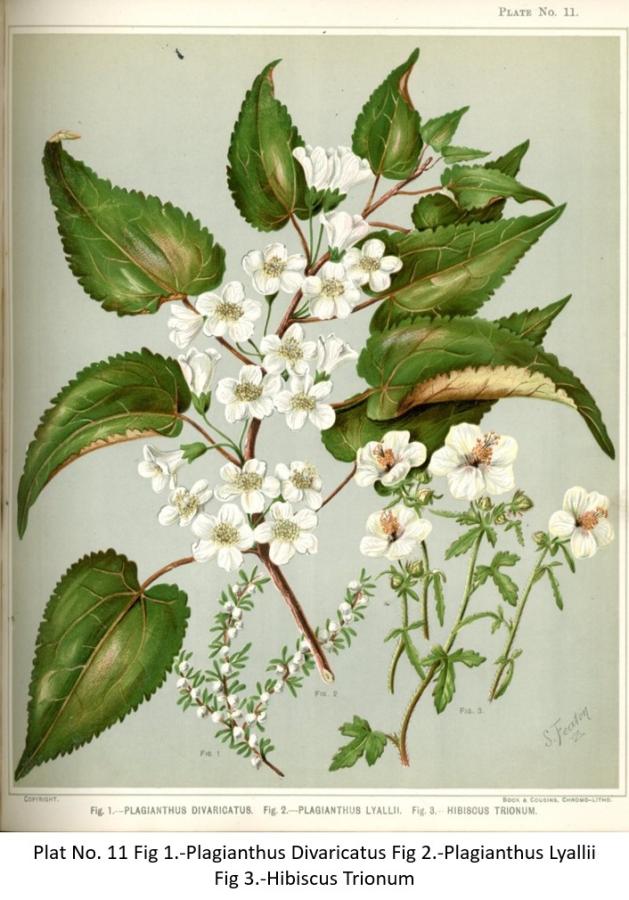
This ‘Archive of the Month’ feature was created by Shan Robinson Special Collections Co-ordinator.
References:-
Sarah Bilston, Queens of the Garden: Victorian Women Gardeners and the Rise of the Gardening Advice Text Victorian Literature and Culture, Vol. 36, No. 1 (2008), pp. 1-19 https://www.jstor.org/stable/40347590
Susan Garland Mann., Gardening as "Women's Culture" in Mary E. Wilkins Freeman's Short Fiction
The New England Quarterly, Vol. 71, No. 1 (Mar., 1998), pp. 33-53
https://doi.org/10.2307/366723•https://www.jstor.org/stable/366723
Nia Meleri Evans, A passion for plants: botanical illustration by women artists. Museum Wales https://museum.wales/articles/1262/A-passion-for-plants-botanical-illustration-by-women-artists/
Joanna Durant, Passionate pioneers: increasing access to botanical artwork by women artists. Royal Botanical Gardens, Kew. https://www.kew.org/read-and-watch/passionate-pioneers-increasing-access-to-botanical-artwork-by-women
ARCHIVE OF THE MONTH: MARCH 2024
To celebrate Mother’s Day in the UK this March, our Archive of the Month takes a look at maternal relationships over the centuries.
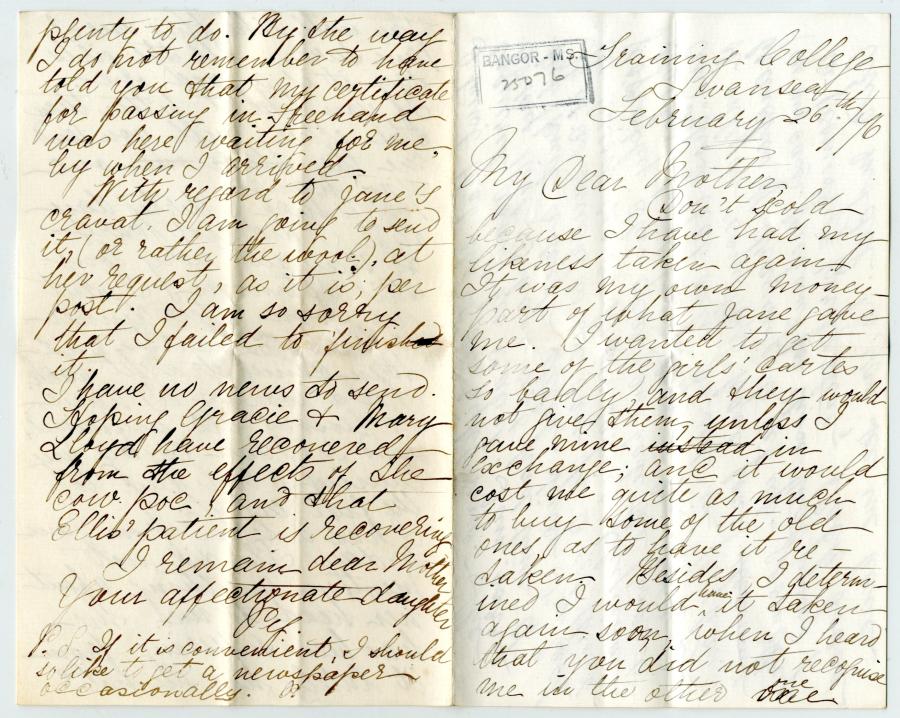
BMSS/25076
In this letter from 1876, Margaret Anne Ellis (signed ‘Peg’), while she was away at Swansea Training College, writes to her mother, starting the letter by saying “Don’t scold because I have had my likeness taken again.” Peg writes of the “dirty day” it had been that afternoon, being able to enjoy her holiday with no lessons, and finishes off by writing “I remain your affectionate daughter”. No matter the distance, communication between mother and child was always kept up via letters and postcards to discuss news or gossip.
PFA/17/397
Other ways found to see the importance of mothers to a person have been a bit more interesting, such as this hair sample from someone’s mother that was cut and has been secured in a small red booklet since the early 19th century. This is certainly one way to keep a part of mother nearby.
PG/92
Going further back in time to this document from the 16th century, a mother and child’s quarrel is recorded. No matter the time period, the relationship between mother and child can be tense, especially when the mother is judgemental of her child’s marital choices. As seen in this arbitration award to mend the tension between Jane Griffith and her son John, by having the son and his new wife, Elin, ask for Jane Griffith’s blessing for the marriage and forgiveness for anything the couple might have done to offend her. In turn, the mother is asked to accept the marriage and give them her blessing.
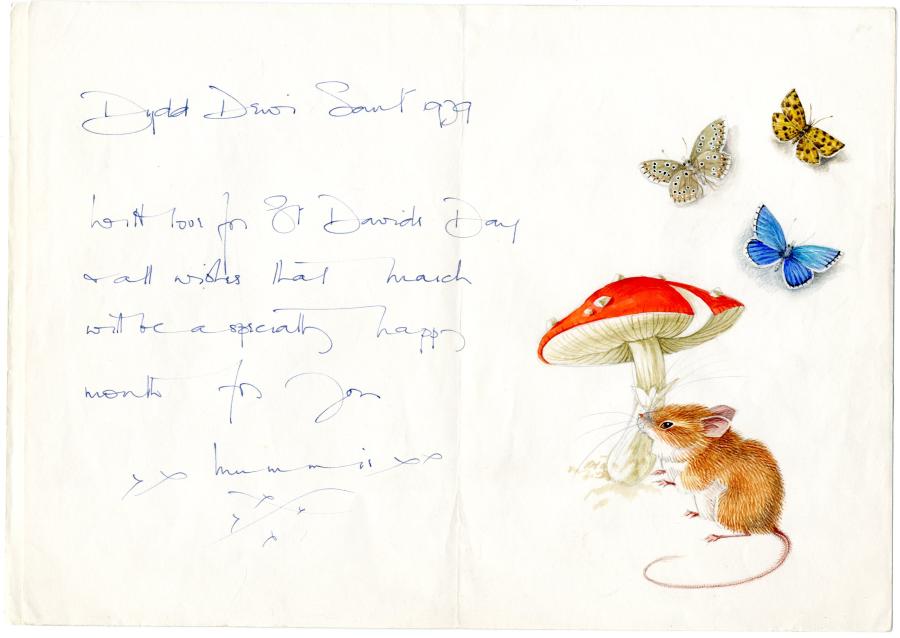
RST/5/37
To conclude, here is a beautiful hand-drawn letter for St. David’s Day from artist Mildred Eldridge to her son, Gwydion Thomas, on the 1st of March 1979. She writes, “...all wishes that March will be a specially happy month for you. xx Mummii xx."
This “Archive of the Month” was created by Belen Montano-Flores a history student on work-placement at the Archives and Special Collection
ARCHIVE OF THE MONTH: FEBRUARY 2024
We’re currently preparing an exhibition to celebrate the 140th Anniversary of the University, and thought we’d give a taste of the type of material we’ll be displaying. This Month’s feature is a photograph of the Student Body and Staff from the 1900/01 academic year when the University was still based in the Penrhyn Arms. This location was never intended to be the University’s permanent home and, soon after this photograph was taken, work began to establish a new, purpose-built university.

ARCHIVE OF THE MONTH: JANUARY 2023
LLYN TEGID (BALA) FROZEN OVER DURING THE WINTER OF 1916-1917
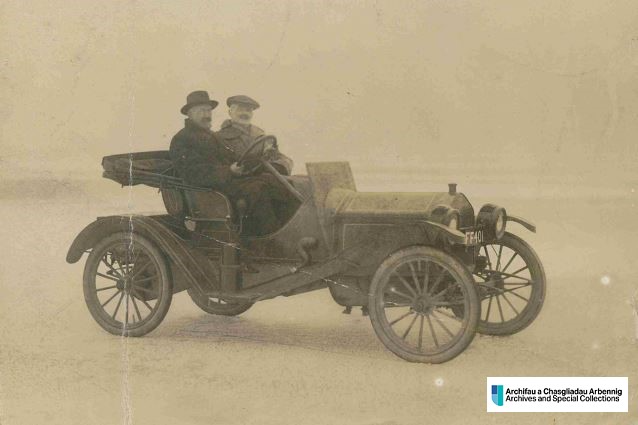
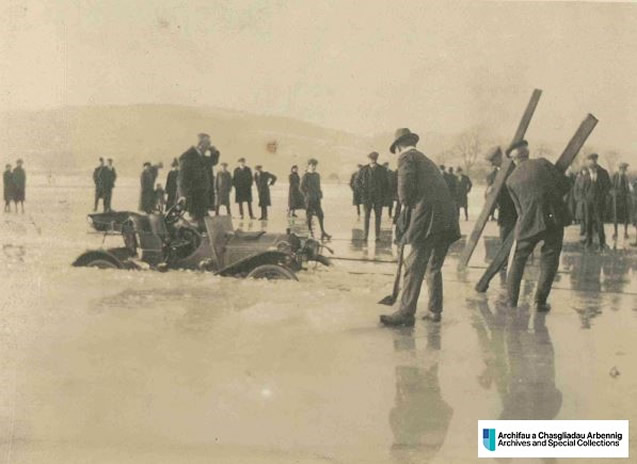
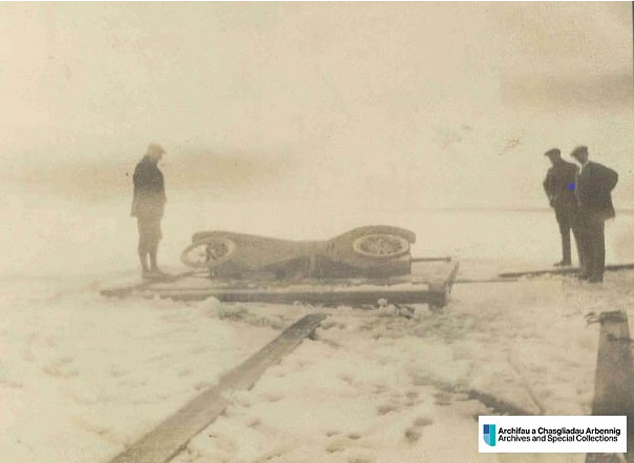
Two members of Bala Urban Council (W. Owen and J.M. Jones) tried to cross over the ice on the Lake in a motor car. They started at the Boat Station and for a time cruised about successfully. But, as they posed for a photograph, the car stopped and a crash was heard – the car had sunk through the ice “submerged like a U-boat.” Luckily there was only five feet of water beneath the ice, and the occupants managed to free themselves. A crowd had gathered, and after a hard struggle the car was successfully removed and pulled back into the town by a group of amused local schoolboys.
This ‘Archive of the Month’ feature was created by Lynette Williams, Archivist.
ARCHIVE OF THE MONTH: FEBRUARY 2023
EDWIN AUGUSTINE OWEN : ACADEMIC, RADIOLOGICAL EXPERT AND PROFESSOR OF PHYSICS AT BANGOR FROM 1926 UNTIL 1954.
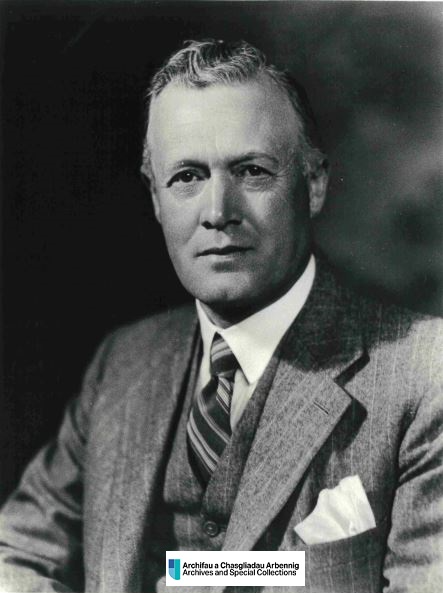
Born to a slate quarryman in Blaenau Ffestiniog, 1887, he was educated at Ffestiniog Grammar School and the University College of North Wales, Bangor, before proceeding to the Cavendish Laboratory at the University of Cambridge. There he undertook important work on Röntgen rays and radioactivity under Professor Sir J.J. Thomson (Röntgen, in 1895, produced and detected X-rays). His discovery that ‘the mass absorption coefficient of a material for x-rays varied inversely as the fifth power of the atomic weight of the radiator’ is known as Owen’s Law. He joined University College, London, where he continued his research on X-rays and atomic Physics, largely in his spare time, whilst in 1918, after being engaged on war work, he was appointed Head of the Radiology Division at the National Physical Laboratory for the Ministry of Munitions where he was able to devote his whole energy to research in X-rays and atomic physics.
He was Honorary Secretary of the Röntgen Society 1920-24, of the British Institute of Radiology 1924-25, vice-president Physical Society of London 1926-28, Hon. Sec. International Committee for Radiological International Committee for Radiological Units 1925-37, vice-president British Institute of Radiology 1939-42. In 1926 he was appointed to the Chair of Physics at Bangor where he established a research school which was internationally recognised for the precision of its X-ray work. He was awarded the Röntgen Award in 1927, was Silvanus Thompson Medallist in 1945 and was vice-president of the Institute of Physics 1957-59.
In addition to his outstanding academic and scientific achievement, Professor Owen made other significant contributions to the community, notably his work with the ‘C & A’ (Caernarvonshire & Anglesey) Infirmary in Bangor. Following the extension of a wing in 1924 it became apparent that this expansion necessitated the purchase of a modern unit, and with this in mind the Infirmary committee consulted Professor Edwin Owen, who recommended the purchase of “a new plant together with couch and screening stand.” He also advocated that the Infirmary should institute an “Electrical and Violet Ray Treatment Room.” This was how he first became associated with the Infirmary, and he was appointed Honorary Physicist in 1928, continuing to serve them with his expertise until 1948. During the first year of his appointment Professor Owen remarked: “ … It can be said that the X-ray Department is so well equipped as any X-ray unit of its size in the country … The Department is in competent hands, the Sister-in-charge having had many years of experience in Radiography.”
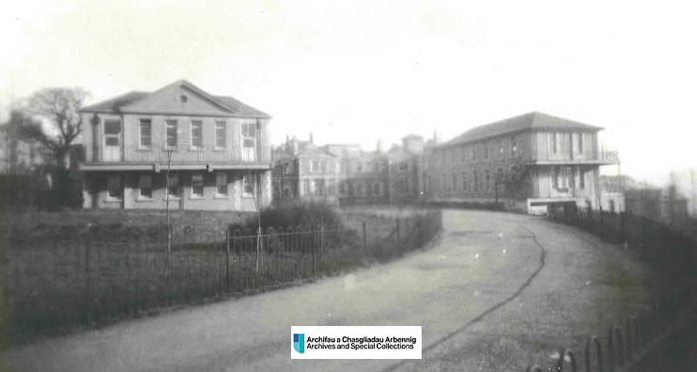
The 'C & A' Infirmary, 1937 (O.V. Jones Collection)
Not only was he a member of the Welsh Regional Hospital Board and Chairman of the Hospital Planning Committee, but he also became acting Principal of the University at Bangor in 1945-46.
A letter written to him by Marie Curie featured as our Archive of the Month for November 2017.
This ‘Archive of the Month’ feature was created by Lynette Williams, Archivist.
ARCHIVE OF THE MONTH: MARCH 2023
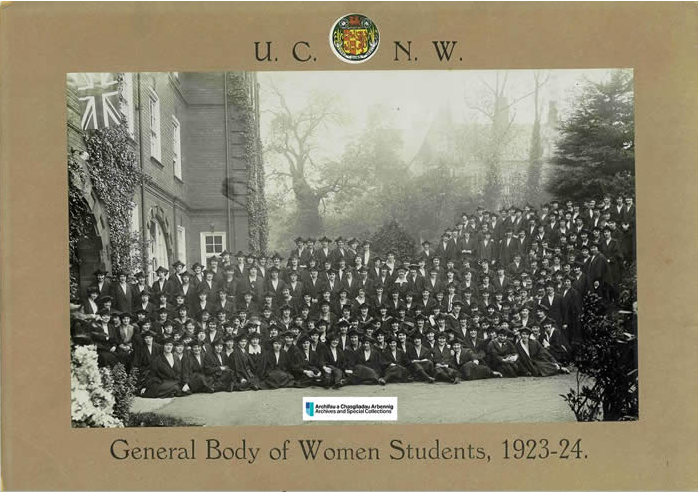
March is the month for observing Women’s History Month, and to celebrate, this month’s feature comes from the scrapbook of Miss M.O. Davis, Warden of the Women Students from 1915 to 1943.
The University College of North Wales, Bangor, in its early years conformed to the model of the English civic universities in admitting women students. This was formalised in the University Charter, which stated:
“Female students shall be admitted to attend any of the courses of instruction established by the College, subject to such restrictions and regulations (if any) as Statutes of the College from time to time prescribe.”
Of the first students to be registered at the University, a third were women (which was a higher proportion than at English institutions during this period) - some of them the daughters of prominent local families; others the children of working men and women.
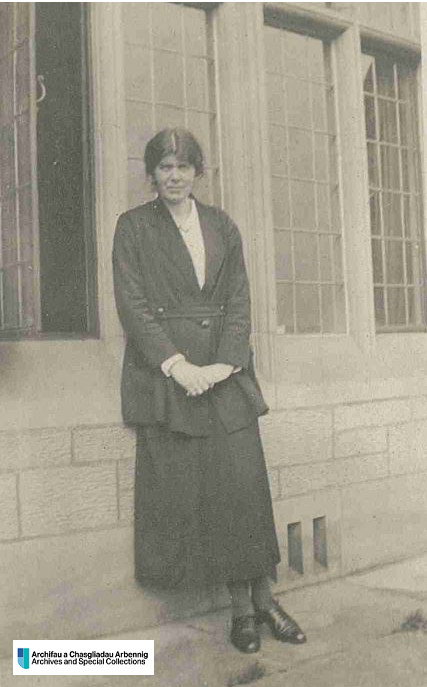
Miss M.O. Davis, 1916.
This ‘Archive of the Month’ feature was created by Lynette Williams, Archivist.
ARCHIVE OF THE MONTH: MAY 2023
Archives & Special Collections has been awarded £206K from the Arts and Humanities Research Council to replace the aging motorised mobile shelving in the main strong room. With the major refurbishment well underway we decided to take a look back to when the shelving was first installed in the 1960s as part of the new Library extension. May’s Archive of the Month features some of the plans of the Library, included in which are the original plans of the Archives and sketches of the Ingold Compactus shelving.
The plans were drawn up in 1962 by Sir Percy Thomas & Son Architects (Cardiff-Swansea-Shrewsbury).
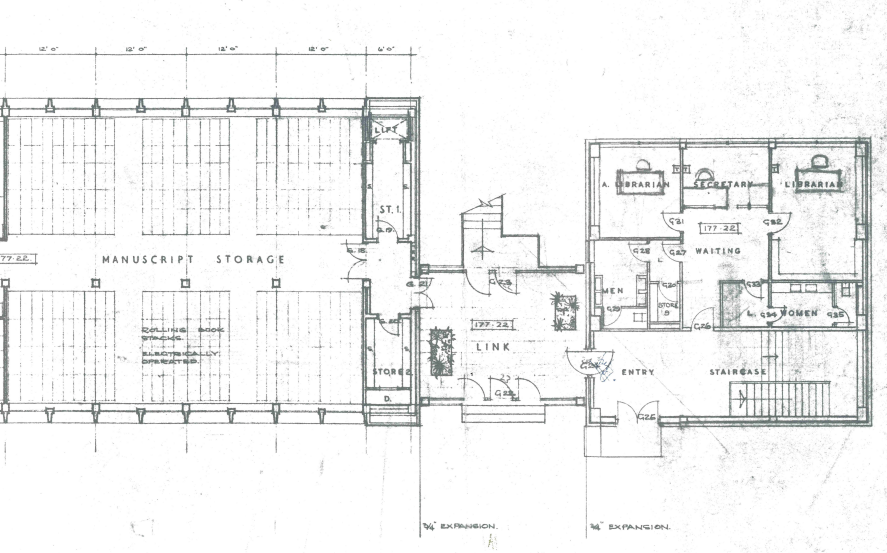
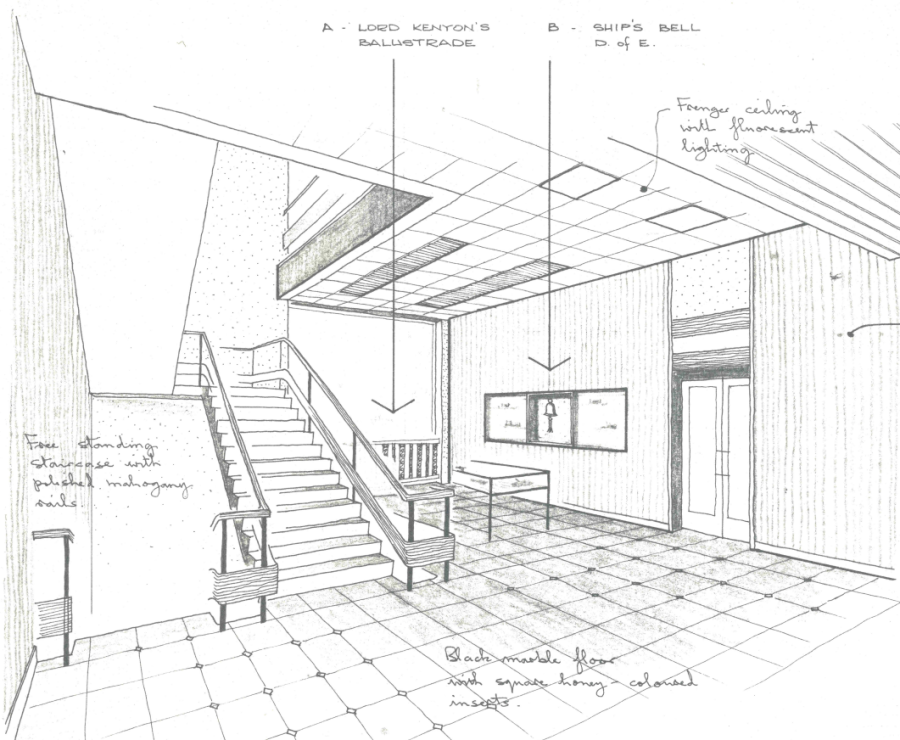
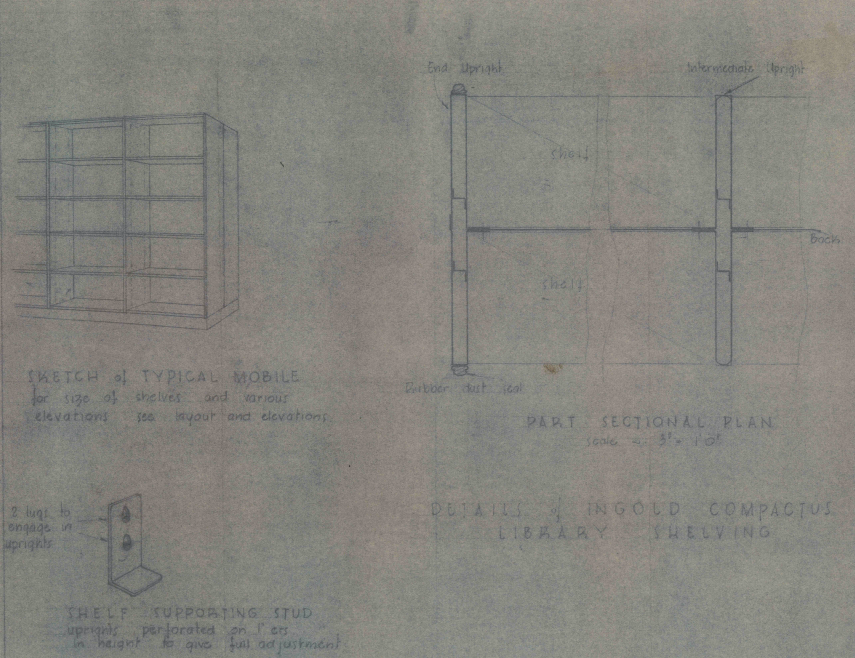
ARCHIVE OF THE MONTH: JULY 2023
‘Yr Ymwelydd’
The Records of the Twrgwyn Chapel, Bangor are available at the Archives and Special Collections, Bangor University. Amongst them are the Quarterly Journal, ‘Yr Ymwelydd’ which was produced by the church between 1972 and 1979 when the Rev. E. Ap Nefydd Roberts was a minister there.
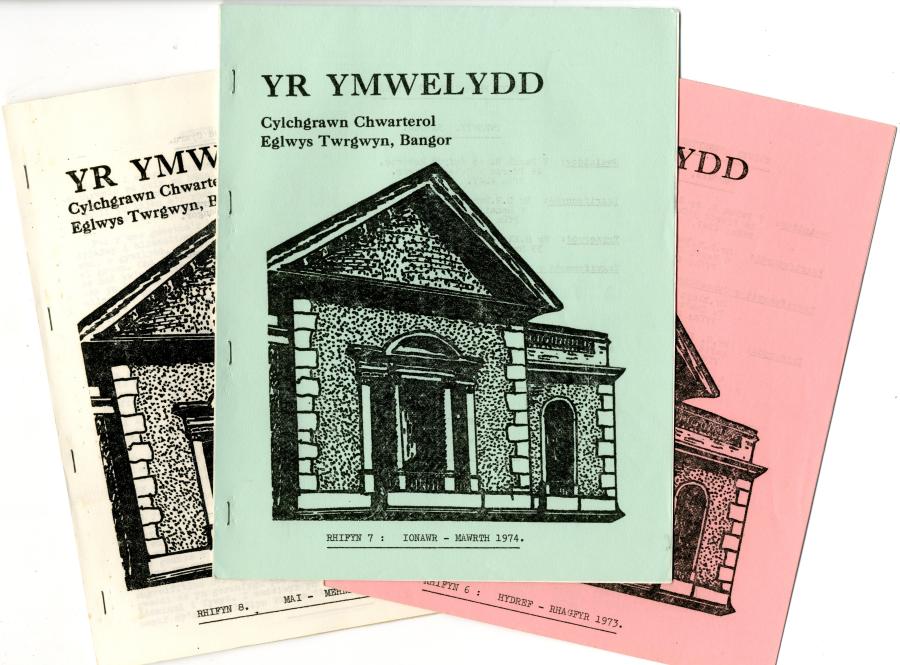
The journals are full of interesting information about the activities of the chapel and all it’s societies e.g. the Sunday School, Twrgwyn Society and the Society of Sisters. There are also news features about the members and an ‘In Memorian’ page that provides short biographical information about those who have passed.
There is no doubt that these journals are an important record of a bustling chapel community in Bangor.
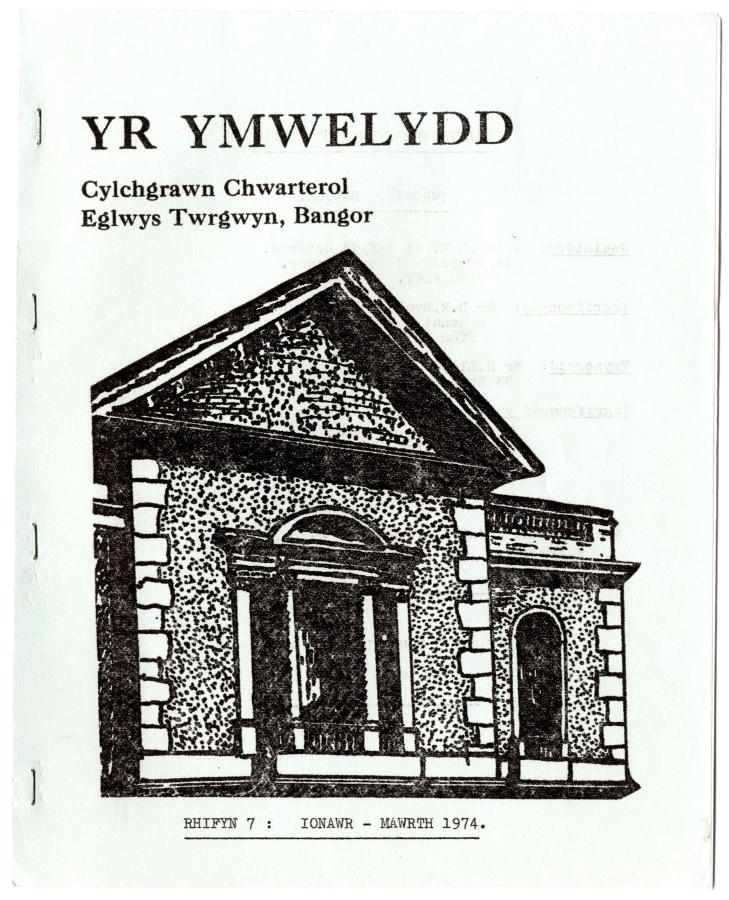
The members of the Tabernacl church joined with the Twrgwyn congregation in 1968 when the Tabernacle closed. More recently, when Capel Berea Newydd opened in Bangor, the members of Twrgwyn moved and left the building on Holyhead Road empty. However, it was bought in 2003 by the Baptist Chapel, Penrallt.
ARCHIVE OF THE MONTH: AUGUST 2023
Stump-Work Box, c.1689-1694
It’s well known that our holdings consist mainly of manuscripts and a diverse range of rare books and printed material, however, did you know that our collections also include a small number of artefacts? From artworks and carvings through to personal items such as medals, writing instruments and even locks of hair! This month’s feature is an excellent example.
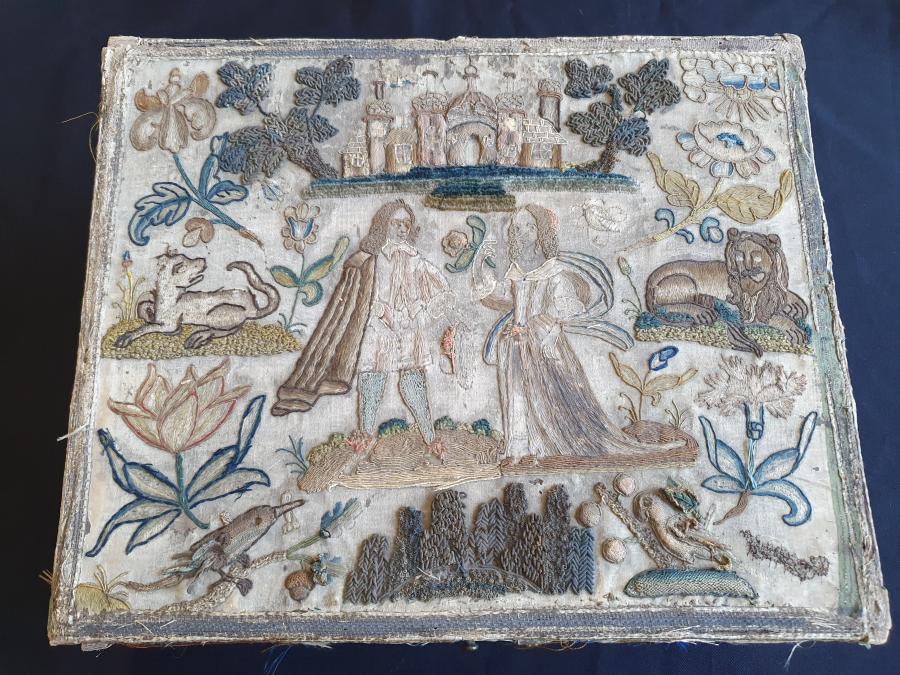
This is a very fine stump-work box with a lift-out layer and two secret compartments. The top bears a representation of King William and Queen Mary (reign 1689-1694). It contains an embroidered purse and a lady’s left-handed glove with the printed stamp inside of “H. Jaffray, near Durban Yard, near Strand, London.”
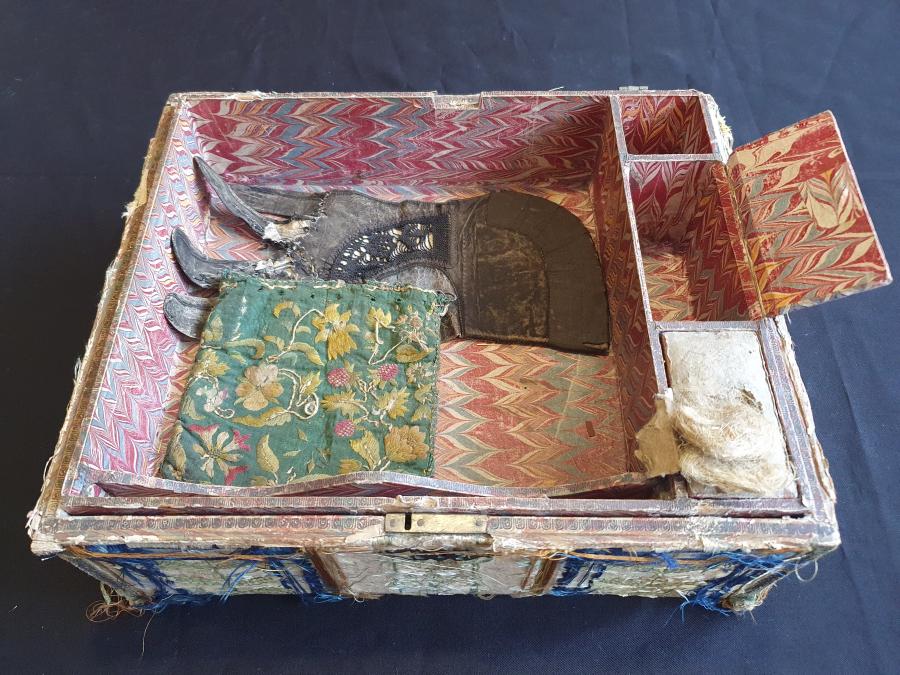
Stumpwork uses an array of different materials and embroidery techniques to tell a contemporary story in stitch using three dimensional elements. It was a popular activity in the 17th century, and was part of a wealthy girl's education, which started with modest samplers from a very early age building up to stumpwork. Subjects would often reflect religious or Royal themes, such as this fine example.
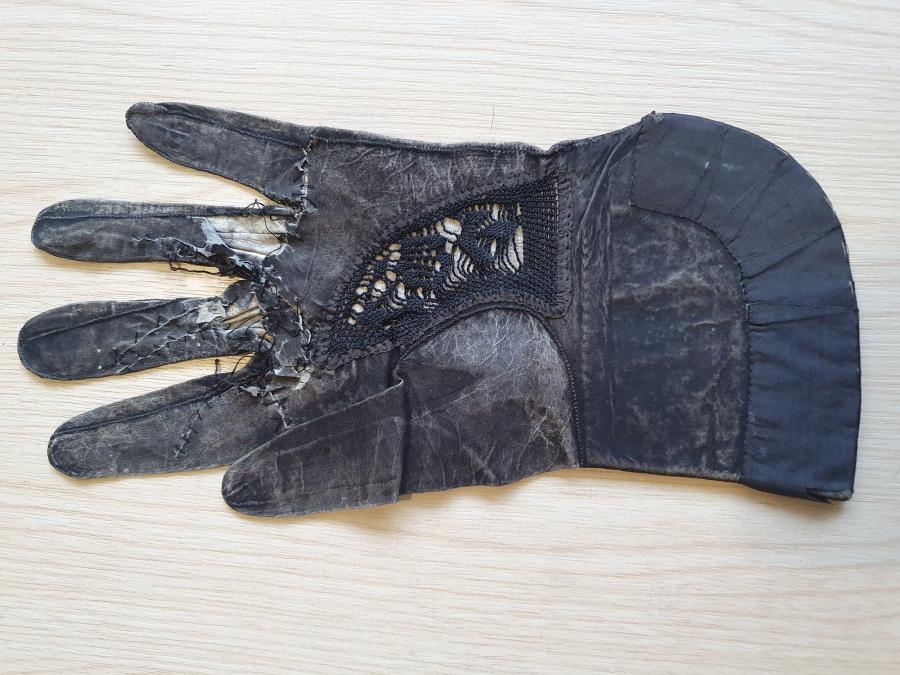
ARCHIVE OF THE MONTH: OCTOBER 2023
R.T. Pritchard Collection
At the recent Community Open Day the Archives displayed a number of historical photographs of the Bangor area from the R.T. Pritchard Papers. They proved quite popular with our visitors, so for October’s Archive of the Month we have decided to feature some of our favourites from his collection.
A native of the City of Bangor, Robert Thomas Pritchard (1890 - 1978) had an abiding interest in its history and development. A truly cultured man, R.T. Pritchard was keenly interested in literature, music, and the fine arts, and he became a privileged member of Bangor's 'town and gown' debating society known as the Dialectical Society. However, it is primarily as an historian that he is remembered - in addition to his service on the Council of the Caernarvonshire Historical Society, he also served on the Committee of the University College of North Wales's Museum of Welsh Antiquities. He was passionately committed to the history of Bangor, but unfortunately due to ill-health he was unable to complete his work for publication on the subject.
Photograph: View on the Suspension Bridge.

Photograph looking down Dean Street - The shop occupied by Thomas Lewis & Co., Grocers, City Steam Mills, on the corner site of the junction of Dean Street and High Street. Note Thomas Lewis's large warehouse at lower end of Dean Street. The Ship building, 315 High Street, and the house next door on the upper side (313) were demolished to widen the entrance into Dean Street.
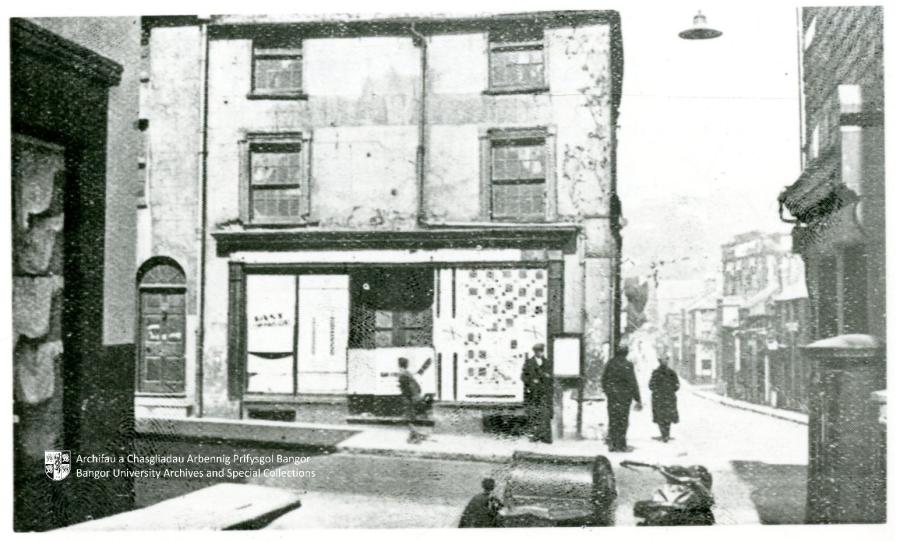
Photograph of 345 High Street, Bangor, the premises of 'Eirwyn Chemist.’
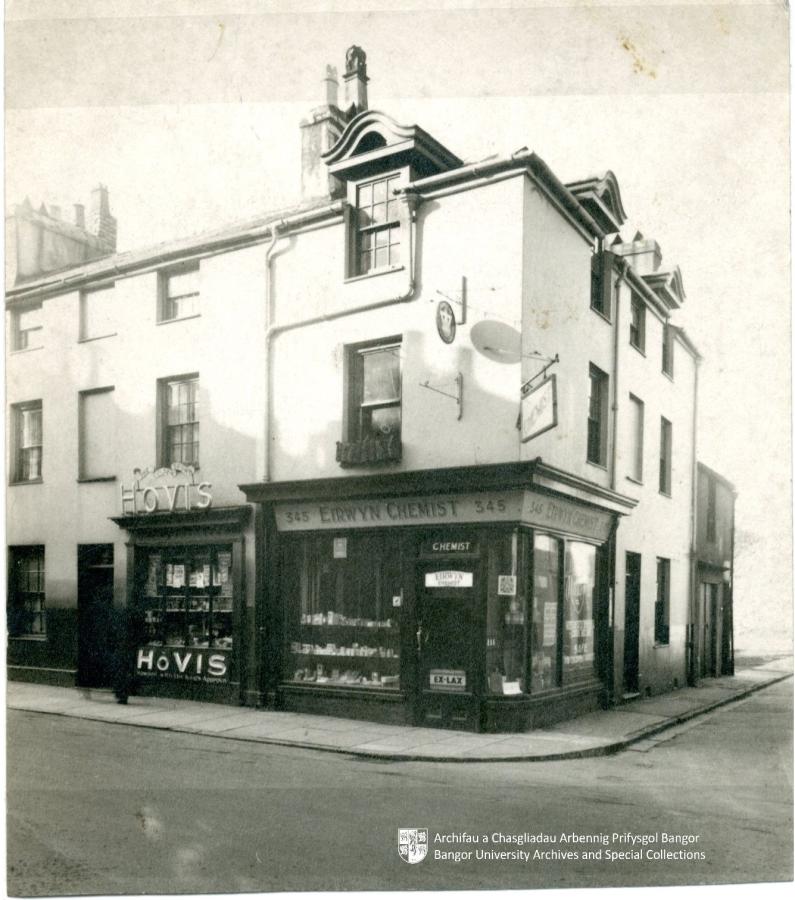
Photograph of Menai Suspension Bridge during the reconstruction work, 1940s.
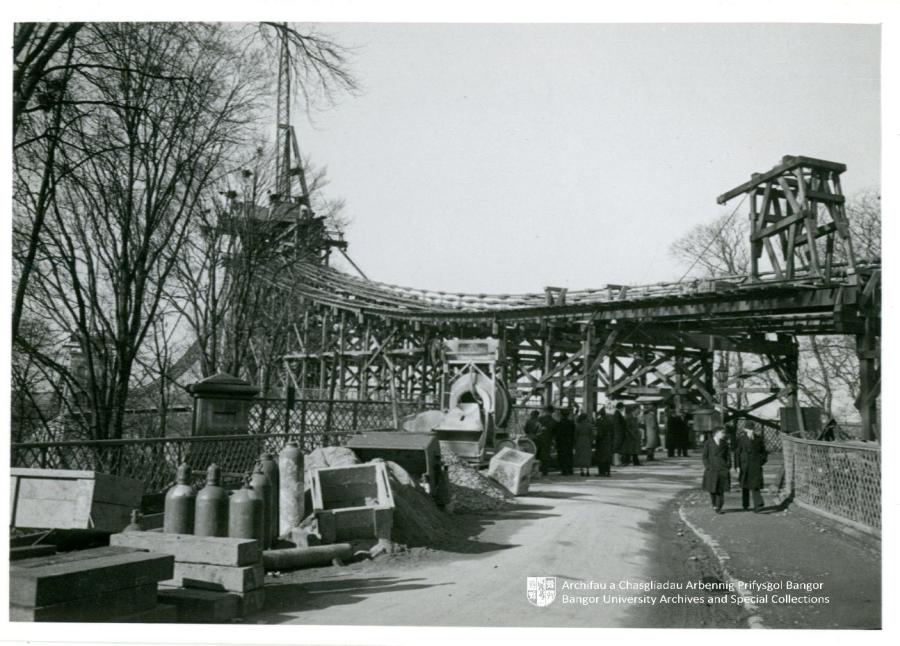
ARCHIVE OF THE MONTH: OCTOBER 2023
Notebooks containing records compiled by one of Professor Thoday's research students of mistletoe, 1936-1941.
The tradition of hanging mistletoe dates back to the ancient Druids who believed the plant brought good luck and helped protect against evil spirits. In the UK, the tradition of kissing underneath the mistletoe dates back to the 1700s but the Victorians continued the tradition of kissing under the mistletoe as it was thought to symbolise fertility and romance.
David Thoday FRS (1883-1964) was Professor of Botany in the University College of North Wales, Bangor, and was distinguished for researches in plant physiology and causal anatomy.

ARCHIVE OF THE MONTH: JANUARY 2022
Photograph of Jennie Thomas, joint-author of the Welsh childrens “Bumper Book”, Llyfr Mawr y Plant, as adjudicator at the Urdd National Eisteddfod, Llangefni, 1948.

This is a timely photograph since Llyfr Mawr y Plant has just celebrated its 90th birthday (it was first published in 1931) and since Urdd Gobaith Cymru is 100 years old this year.
In an article about her in the Welsh journal, Barn, February 1980, it states that Jennie Thomas was often heard delivering an adjudication on the stage in an eisteddfod exclaiming “Goodness me” just like the characters in her stories about Wil Cwac Cwac!
This “Archive of the Month” feature was created by Elen Wyn Simpson.
ARCHIVE OF THE MONTH: FEBRUARY 2022
VALENTINE CARD
You might have missed Santes Dwynwen day, but it’s still not too late to express your love by sending a romantic card on Valentine’s Day.
Here is an example of a Valentine Card from the 19th century which can be found amongst the Wynn Hall Manuscripts. Paper Valentines became popular in the early part of that century. Fancy Valentines were made with real lace and ribbons, with paper lace introduced in the mid-19th century.
‘Valentine Card (16th February 1875) addressed to Miss Lydia Kenrick in Rhyl.’



This “Archive of the Month” feature was created by Lynette Williams.
ARCHIVE OF THE MONTH: MARCH 2022
THE WELSH COLONY IN PATAGONIA
This month marks the 200th anniversary of the birth of Michael D. Jones, the founder of the Welsh settlement in Patagonia. Bangor University houses the largest collection of material relating to the Welsh colony in Patagonia outside the National Library of Wales.
“My object was to found a colony in which Welshmen could remain Welshmen, speaking the Welsh language, keeping up Welsh customs, and retaining their national characteristics” (Michael D. Jones, 1894).
The Patagonian Collection held by the Archives is an amalgamation of several acquisitions amassing over 1500 items comprising manuscripts, letters, photographs, diaries, newspapers, books and plans pertaining to the Patagonian Welsh colony established 150 years ago. The documents present first hand accounts and photographic evidence of the lives of the pioneers and settlers of the colony, enabling readers to gain an empathy and understanding for the group of Welsh people who strived for linguistic and religious freedom with political autonomy 8000 miles away from their homeland.
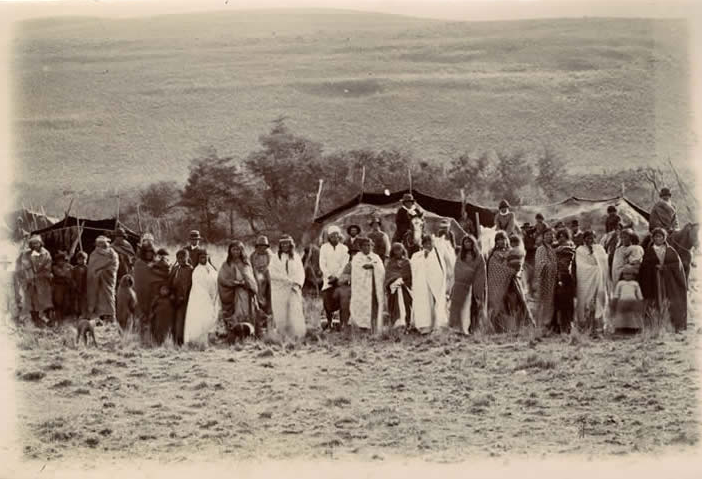
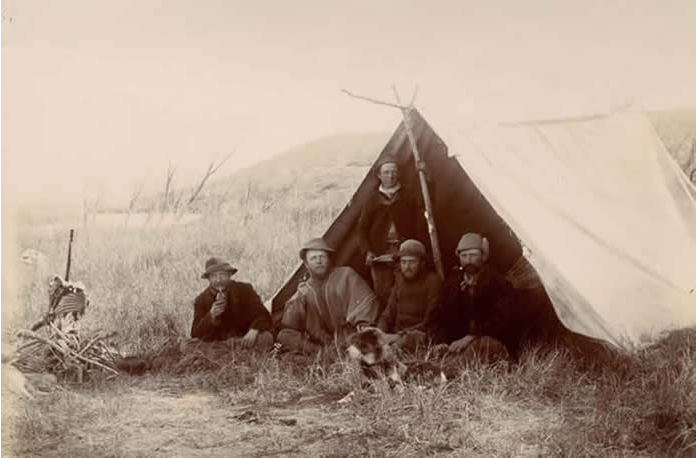
This month's Archive of the Month feature was created by Lynette Williams, Archivist.
ARCHIVE OF THE MONTH: APRIL 2022
KHASI AND JAINTIA HILLS MISSIONARY MINUTE BOOKS (1869 – 1913)
The National Manuscript Commission Trust (NCMT) has awarded £1,451 to conserve the Khasi and Jaintia Hills Missionary Minute Books (1869 – 1913). Documenting the presence of the Welsh in north east India and the influence of the Welsh Methodist Mission and Khasi culture on each other, these important minute books help to build a better understanding of the shared history between the two communities.
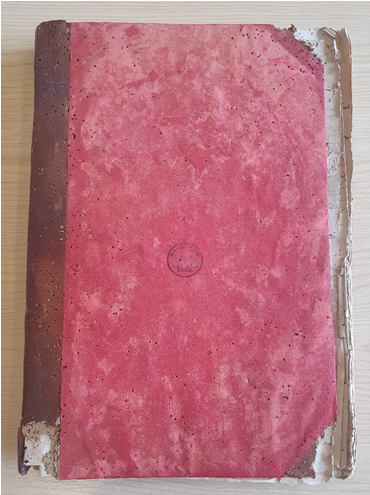
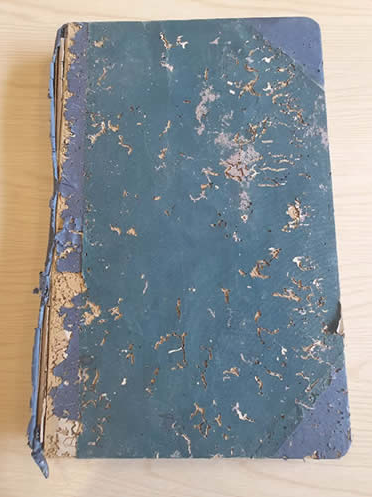
The Minute Books are severely damaged and are badly in need of conservation, a consequence of which is we can no longer allow access to them due to their fragility and deteriorating condition. It is essential to the mission of the Archives to preserve these records and make them as widely available as possible to scholars and the public. It is envisaged that the documents will be digitised using internal funding, along with the papers within our other missionary collections, enabling us to make them available remotely via the JSTOR Open Community Collections Initiative.
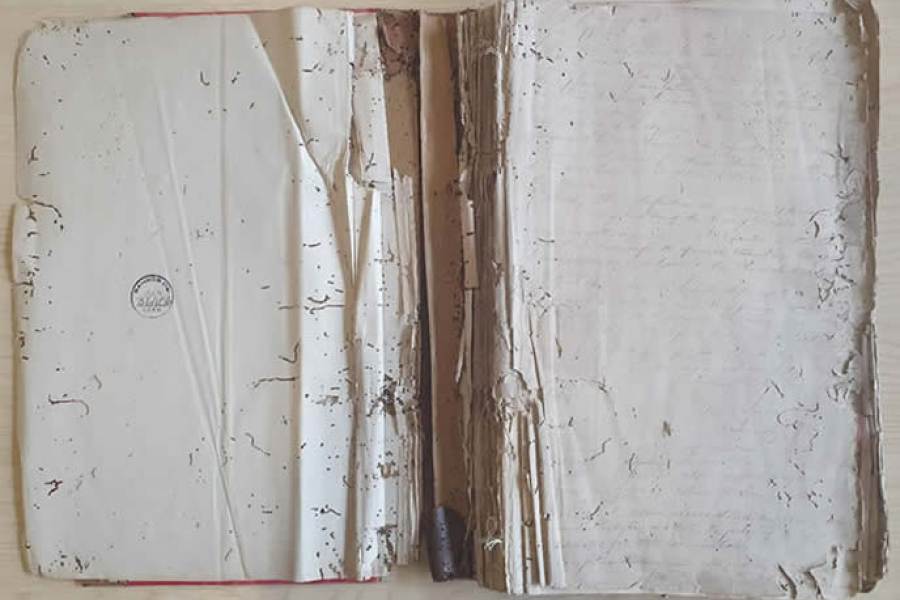
The Crossing Cultures: sharing the work of Welsh missionaries in India with the World project will preserve the history of the connection between the Khasi people, their language and culture, with the Welsh Missionaries. The missionary material at Bangor University is of both national and international interest, enabling researchers and communities to deepen the understanding of British colonial experience in the 19th-century.
This “Archive of the Month” feature was created by Lynette Williams, Archivist.
ARCHIVE OF THE MONTH: MAY 2022
GARTH PIER, 1914
Garth Pier, Bangor, has been named ‘Pier of the Year 2022’ by the National Piers Society, with judges saying it "boasts the best panorama of views of any pier in the UK" [Bangor Garth voted Pier Of The Year 2022 - National Piers Society]
On the 14th May 1896 Lord Penrhyn officially opened the pier following a procession through the city and a crowd of over 5,000 people assembled to watch the opening ceremony.
During heavy gales in December 1914 the ‘S.S. Christiana,’ a steamer of some 282 tons which was moored in the Menai Strait, crashed into the Pier, causing a large portion to collapse. Rendered helpless by the wind she lost her propeller and was driven by the squall almost broadside against the pier. The stern of the steamer first collided with and demolished one of the iron pillars in the middle of the structure. About 20 feet of the vessel’s stern got under the pier and smashed another iron pillar. Onlookers, local fishermen and the Piermaster all rushed to the steamer’s assistance and fastened it to the ‘Ja Ja’ jetty nearby. Once the Christiana was clear, a length of the pier deck fell into the sea beneath.
In the early months of 1915, Officers and men from the Royal Anglesey Royal Engineers constructed, free of charge for labour, a substantial temporary gangway over the gap which subsequently remained in place for a further 7 years as a result of the Great War.
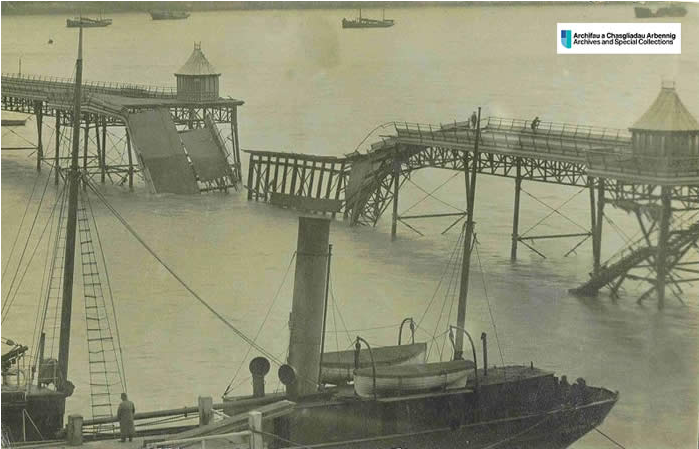
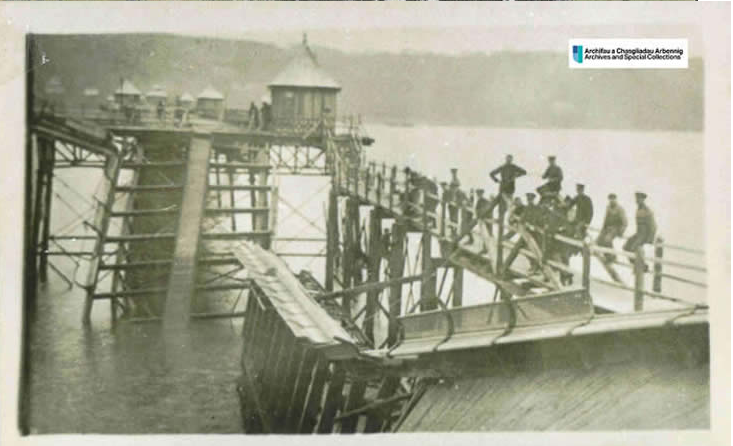
Photographs of the damage to Bangor Pier after the 'S.S. Christiana' broke free of her moorings and collided with the neck of the pier.
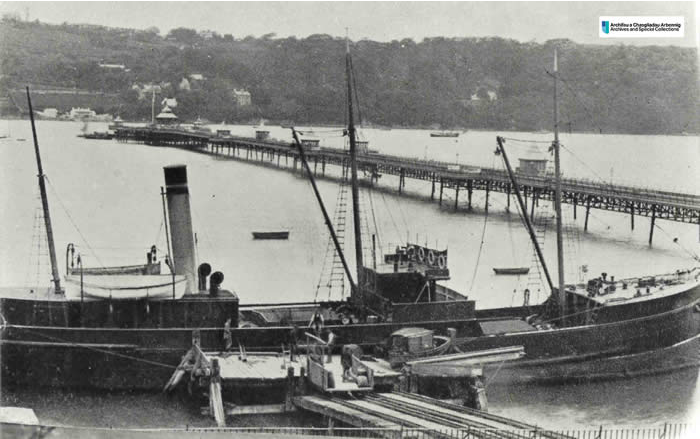
ARCHIVE OF THE MONTH: JUNE 2022
R.S. THOMAS - OMNIBUS
R.S. Thomas (1913-2000) is a major writer of our time, one of Wales’s greatest poets. This Summer the R.S. Thomas Research Centre in conjunction with the Archives will be showcasing original documents and artefacts from the Centre’s collection in the Archives Annual Exhibition: R.S. THOMAS: HIS LIFE AND WRITING.
RST’s earliest printed poems appeared in Omnibus, the student magazine, while he was a student at what was then the University College of North Wales, Bangor. His poems, and one piece of creative prose, appeared over the nom-de-plume ‘Curtis Langdon’. RST said in an interview in 1990 that in retrospect he was ‘astonished' at the pen name he adopted and felt it was derived from the names of the sort of authors his mother read as he grew up (‘Warwick Deeping’). When a new editor took over and RST heard him say that ‘there would be no more poems by that b****y Curtis Langdon’, RST submitted a poem, copied out by a friend, as ‘Figaro’– and it was accepted.
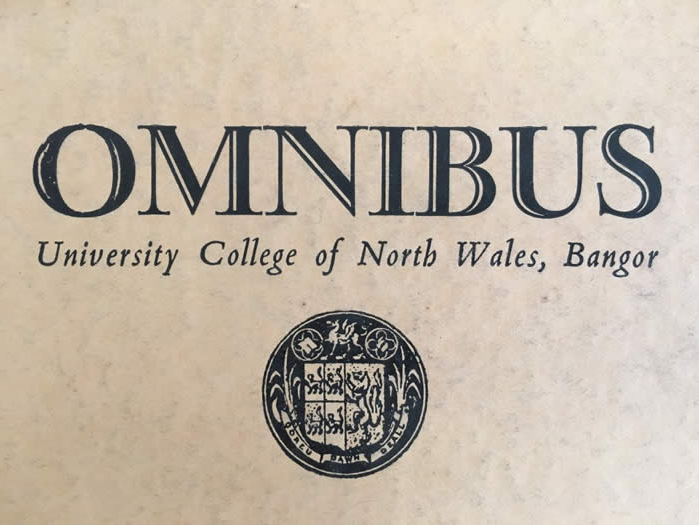

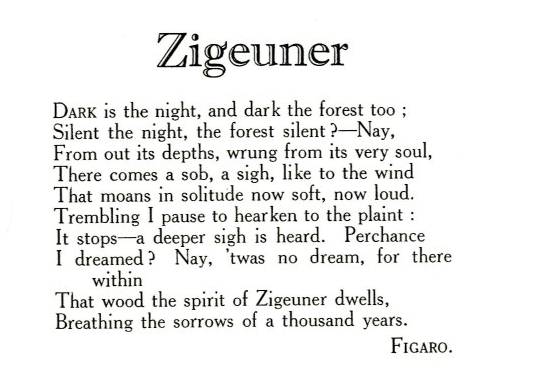
This “Archive of the Month” feature was created by Lynette Williams.
ARCHIVE OF THE MONTH: JULY 2022
The Talfourd-Jones Collection
The Archives recently welcomed Volunteers from the North Wales Wildlife Trust’s 'Project Siarc' with Archives staff giving sessions on how to search through archival and special collections records to help with their research. Amongst the finds, we came across some beautiful rare books from the Talfourd-Jones Collection.
Frederick Talfourd-Jones (1874-1945) was a distinguished civil engineer and a keen member of the Llandudno, Colwyn Bay and District Field Club – a club whose object was to encourage the Study of Natural History and Archaeology, particularly in North Wales. After retiring, Talfourd-Jones gathered together a collection of printed material on various aspects of Natural History - the University Library purchased the collection shortly after his death in 1945.
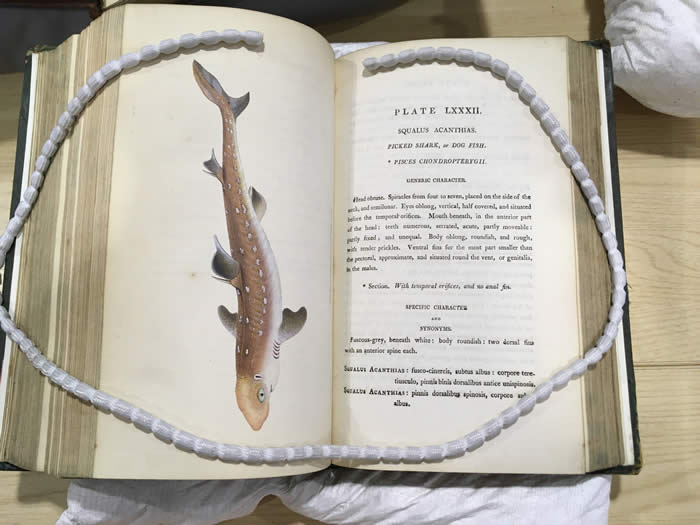
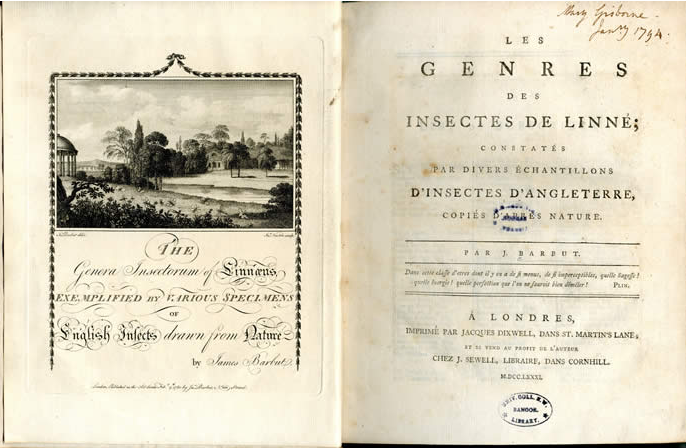
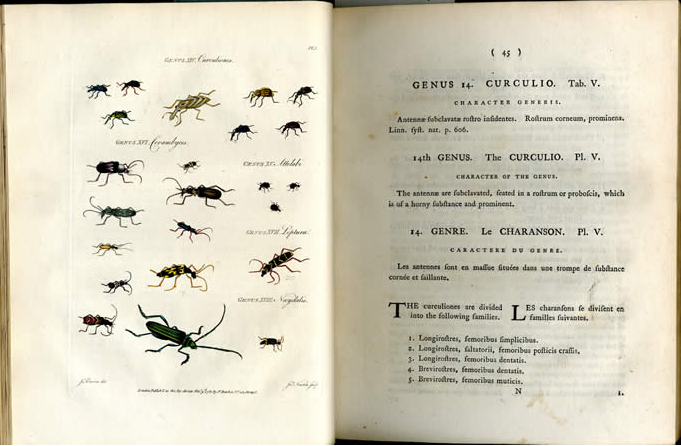

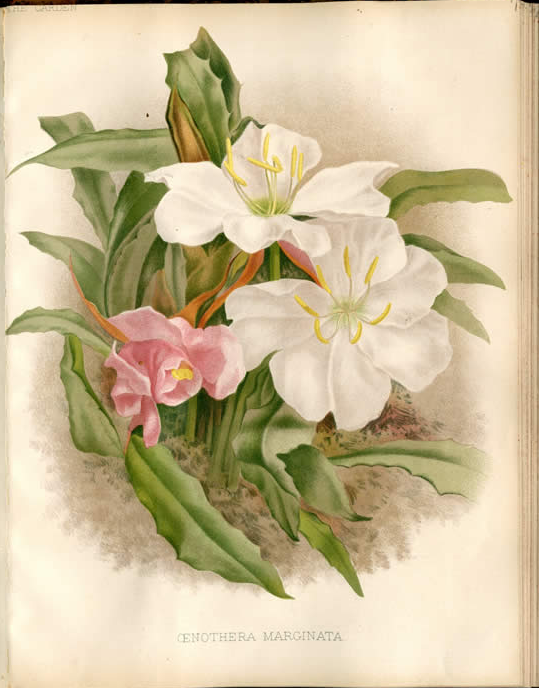
ARCHIVE OF THE MONTH: AUGUST 2022
MARY SUTHERLAND (1893-1955) – THE WORLD’S FIRST FEMALE FORESTRY GRADUATE
To mark the unveiling of the portrait of Mary Sutherland in the University’s Council Chamber, the Archive of the Month for August 2022 features a recently discovered box of personal photographs belonging to Mary from her time as a student at Bangor. Mary changed the status of women working in forestry when she graduated from the University College of North Wales in 1916 – she became the first female forestry graduate in the world.
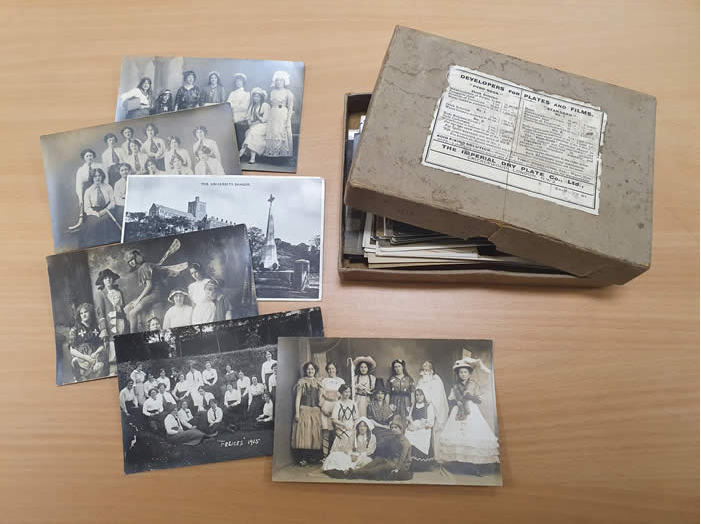
She enrolled at the University in October 1912 where she took the Applied Science in Agriculture course, studying soils, manures and agricultural chemistry (during this period Agriculture and Forestry were inextricably linked). During the 1913-14 Academic year Mary was studying an intermediate course in botany and zoology, and by 1915-16 she had focused her sights on Forestry, gaining a First Class in her examinations.
Mary was also very active in non-academic activities whilst at Bangor. She was the Vice President of the Scientific Society (Biological Section), a member of the Literary and Debating Society team, and a member of the Women’s Common Room Club Committee. She also attempted to establish a private Boating Club but failed to get the permission of Reichel (the then Principal) and the Senate to let them use University boats and land.
This “Archive of the Month” feature was created by Lynette Williams, Archivist.
ARCHIVE OF THE MONTH: SEPTEMBER 2022
YR OENIG

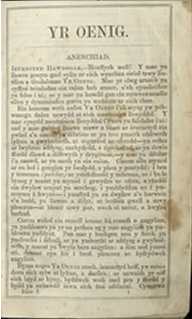
This is a Welsh Language monthly journal intended for children which includes general as well as religious themes. The main content includes biographies, stories, series and poetry. The journal was edited by ministers Thomas Levi (1825–1916) and David Phillips (1812–1904). The journal was produced in an attempt to make cheap printed material available to Welsh adults and children. The main objective was to supply a variety of materials about celebrities, missionaries, discoveries, astronomy as well as sermons. Unfortunately, due to practical as well as financial circumstances, the enterprise only lasted for two years, coming to an end in 1857.
This “Archive of the Month” feature was created by Shan Robinson.
ARCHIVE OF THE MONTH: OCTOBER 2022
UNCLE TOM’S CABIN


To mark Black History Month, October’s Archive of the Month features 2 versions of the Welsh translation of Uncle Tom’s Cabin, Harriett Beecher Stowe’s influential anti-slavery novel published in 1852.
More than 160 years after its publication, Uncle Tom’s Cabin has been translated into more than 70 languages and is known throughout the world.
ARCHIVE OF THE MONTH: NOVEMBER 2022
AN APPLICATION TO PARLIAMENT TO MAKE AN EMBANKMENT OR DAM WITH A LOCK AND DRAWBRIDGE OVER AND ACROSS THE MENAI STREIGHTS" 1783
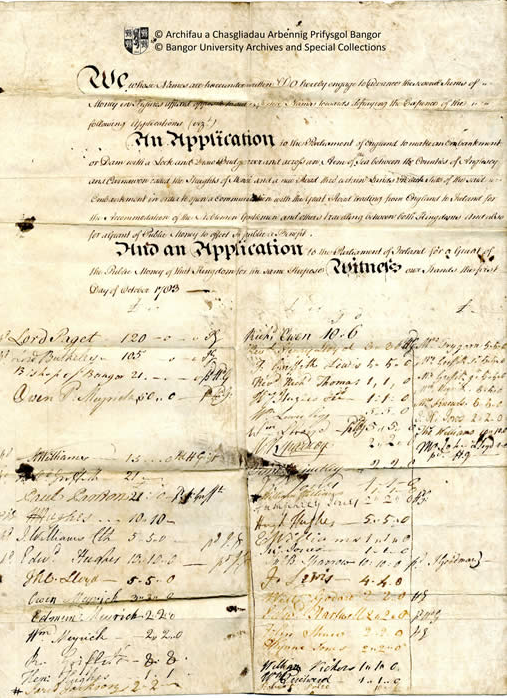
List of subscriptions by local noblemen and gentry in support of an application to Parliament to make an embankment or dam with a lock and drawbridge over and across the Menai Strait, and an appeal for a grant of public money, 1783. The purpose of the ‘embankment’ being to link ‘the Great Road’ between Ireland and Parliament in London. Also includes an appeal to the Parliament of Ireland for the same purpose.
Names include Lord Paget (Plas Newydd Estate), Lord Bulkeley (Baron Hill Estate) Owen Meyrick (Bodorgan Estate) and the Bishop of Bangor, amongst others.
This 'Archive of the Month' feature was created by Lynette Williams, Archivist.
ARCHIVE OF THE MONTH: DECEMBER 2022
RECIPE TO MAKE ELDER WINE AT CHRISTMAS
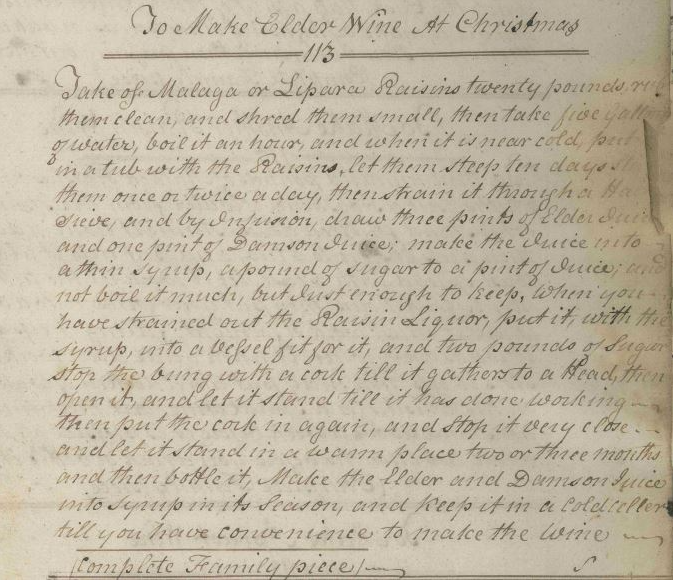
Elder, particularly the fruit, has been used for food, drink and medicinal purposes for centuries. Its propensity to grow wild in great quantities, often as hedgerows, meant they would be readily available around homes and farms.
This Christmas recipe is taken from a handwritten ledger containing a collection of recipies and remedies most probably written in the early 19th century [1798 watermark on paper] by an unknown author.
Recipes also include (amongst many others):
- To make mead
- To make plum cake
- To make the Queens Cheese
Remedies include:
- An infallible cure for a sore throat
- A bad cure for a cough
- For the bite of a mad dog
This ‘Archive of the Month’ feature was created by Lynette Williams, Archivist.
ARCHIVE OF THE MONTH: JUNE 2021
Brochure for the Kinmel Hall Rheuma Spa, c. 1930s
The Hall was transformed from a private house to a health centre for the treatment of people with rheumatism by Mrs Florence Lindley, formerly headmistress of Lowther College, at the nearby Bodelwyddan Castle. The spa remained until the outbreak of World War II, when the hall was taken over as a hospital.
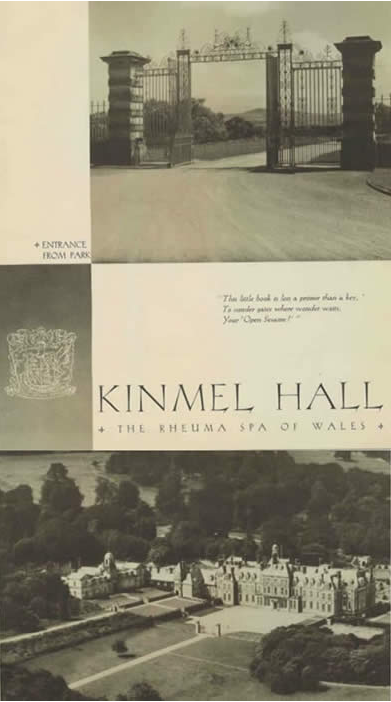
The Kinmel Manuscripts, held by the University’s Archives & Special Collections department, are a collection of 1809 items ranging in date from 1391 relating to the Kinmel estate in the counties of Denbigh and Flint owned, successively by the families of Holland, Carter and Hughes.
This "Archive of the Month" was created by Lynette Williams, Archivist
ARCHIVE OF THE MONTH: JULY 2021
Bangor University Rag Record in Aid Of Charity, 1961.
Musical record produced by Echins (Bangor University Rag Mag) for Rag Week – one of the composers and singers on the record is Roger Whittaker [the singer / songwriter and musician], a former Bangor student.
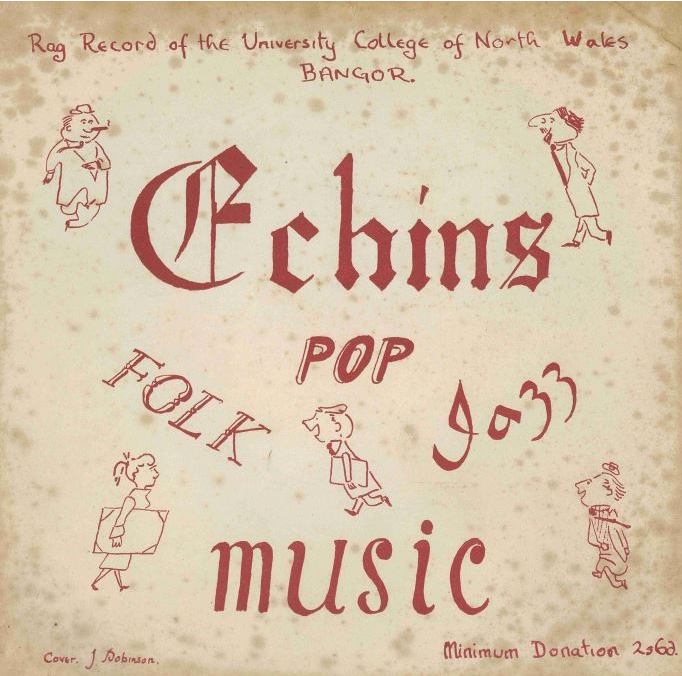
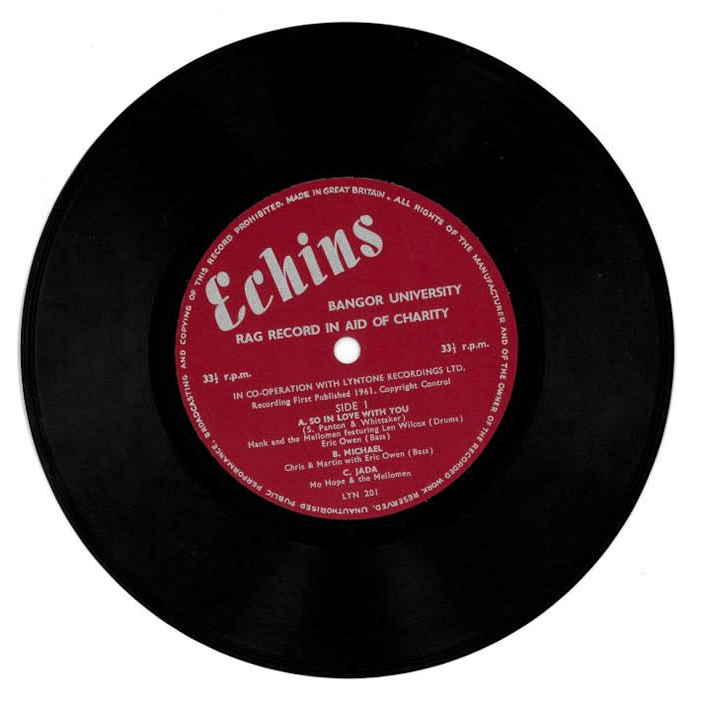
This “Archive of the Month” was created by Lynette Williams, Archivist
ARCHIVE OF THE MONTH: AUGUST 2021
Dr Paul Whalley Nature Diaries
These images have been taken from the nature diaries of Dr Paul Whalley, former Bangor University student.
The collection of 13 diaries, received by the Archives and Special Collection in June this year, span many decades, from 1944 to 2020 and contain detailed information regarding the weather, lists of birds seen and general observations about nature.
Paul Whalley was only 14 years old when he started writing his nature diaries and continued without a break until he was in his late 70s. He studied zoology and entomology at Bangor University and formed the Bangor Bird Group with a fellow student. He worked in Uganda as an entomologist before returning to the UK and securing a post with the Natural History Museum.
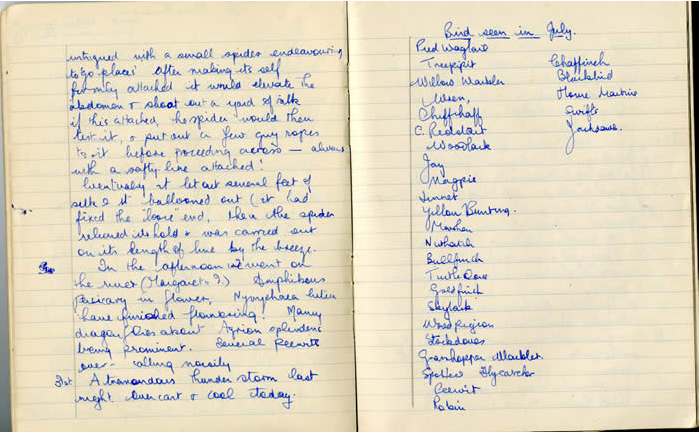
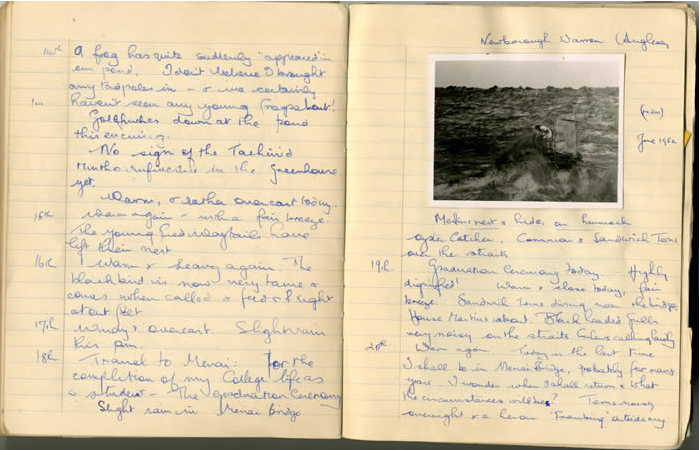
Watch a video about this fascinating collection here

ARCHIVE OF THE MONTH: SEPTEMBER 2021
Charles Harper Albums
These images have been taken from a spectacular album of West African photographs, believed to date from 1900–1910. The album was compiled by Sir Charles Harper and presented to his wife, Marjorie Ford, daughter of Rev. Gerard Ford, Rector of Ideford, as a wedding present in 1910.
For further information about Charles Harper and his career as a Civil Servant view our exhibition.
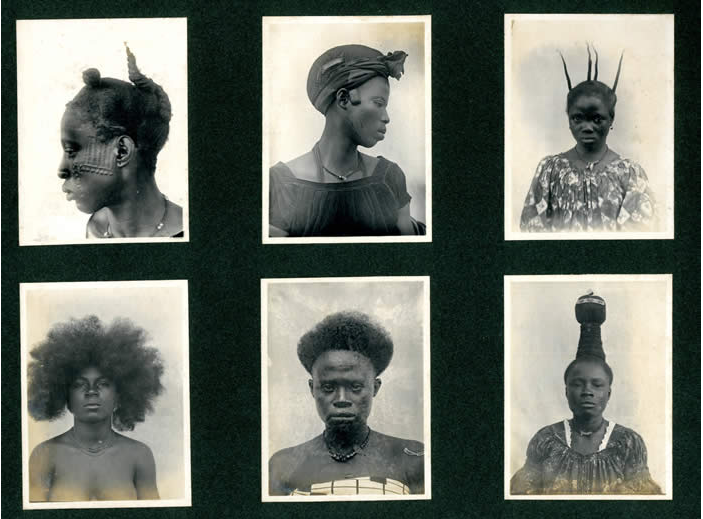
This "Archive of the Month" was created by Elen Simpson
ARCHIVE OF THE MONTH: OCTOBER 2021
Travel Albums
A series of meticulously organised postcard albums from numerous journeys and cruises taken by John Richard Williams (1892–1961) and his sister, Anne Williams (1896–1984), of Colwyn Bay. The collection of albums tracks 26 journeys between the siblings across the breadth of Europe and the Cayman Islands. The postcards were mostly purchased as memorabilia, pristine and carefully slotted into the albums as souvenirs of their travels and tell the story of their many journeys across Europe during both peace and wartime.


Some of the cards in particular are distinctive not only for their vibrant colours, but for how closer inspection shows the waxy residue of having been hand-coloured over top of black and white prints. In particular, the ones stored at the end of the ‘Paris, Versailles & St. Cloud’ album (1924), the ‘Norwegian Fjords’ album (1927–1931), and the album of their Calgaric Cruise on the White Star Line to ‘The Baltic and Scandinavian States, the Cayman Islands and Madeira’ (1930–1931) have been carefully coloured to demonstrate the brightness of the scenery and show the care the two siblings put into documenting their travels. One postcard specifically, from the ‘France & Belgium’ album (1917–1923), while in black and white, has been annotated with an arrow and “my home”, immortalising their stay in very personal way.
This “Archive of the Month” was created by Alaw Dafis, Intern
ARCHIVE OF THE MONTH: NOVEMBER 2021
Crossed Letter
The Archives and Special Collections has, in its possession, a collection of eighteen letters sent between two Welsh brothers who emigrated to America from Castell Hen, near Bala, between 1943 and 1952. John D. Pugh, who crossed to America from Liverpool in June of 1943 was the first of the brothers to make the move and wrote a number of detailed letters to his brother, Hugh Pugh, his parents, and his wider family and community. Most of his letters are updates to his family on his health and includes detailed descriptions of his experiences travelling through the different cities of the state of Ohio, while living in the cities of Columbus, Cincinnati and Portsmouth.
One of his many letters to his parents, sent from Columbus on the 14th of July, 1845, demonstrates a particular style of letter writing common when paper was hard to come by or too expensive. This crossed letter to his parents creates a grid-like pattern of neat handwriting that runs perpendicular across the page and designed to be read first upright and then again when rotated 90 degrees. This writing – developed to maximise the limited space available on a page, completely covers both sides of a folded A3 sheet of thin paper – creating a dizzying pattern of handwriting that makes eight sides of paper out of four.

Two of the most interesting letters in this collection are again from John D. Pugh, one to his brother and another to his parents. Both are sent from Cincinnati, three years apart, and are written on pages printed with illustrations of the city from across the Cincinnati River, a detailed map, and pictures of infrastructure and architecture. These two letters offer an exciting insight into how the city may have looked during this period, how different artists may have chosen to depict the view of the city from across the river, and how the city itself may have changed across almost two centuries.
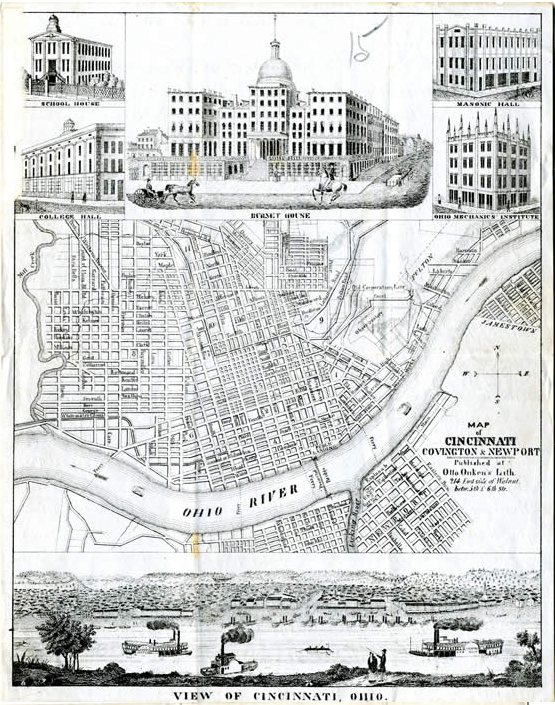

The art included in both letters were likely produced with the intention of presenting the city of Cincinnati in the best light, and possibly marketed to customers sending letters to distant relatives as a means of advertising the best qualities of the city to tourists or migrants. The one sent to John’s brother, Hugh, may even have contributed to his decision to follow his brother to America, and the one to his parent may have been chosen to reassure them of their son’s wellbeing in a foreign city.
This “Archive of the Month” was created by Alaw Dafis, Intern
ARCHIVE OF THE MONTH: DECEMBER 2021
Christmas Carols
What better way to get into the Christmas spirit than to sing or listen to a few festive carols. The Christmas tradition of carol singing became popular during Victorian times and this booklet belongs to that exact period.
Published by H. Humphreys of Caernarfon and sold for 6 pence it contains 19 Welsh Christmas carols. Whilst carols such as “Difyrwch Gwŷr Aberffraw”, “Sawdl Buwch” and “Malldod Dolgellau” would have been popular at the time, they are not so recognisable to us today.
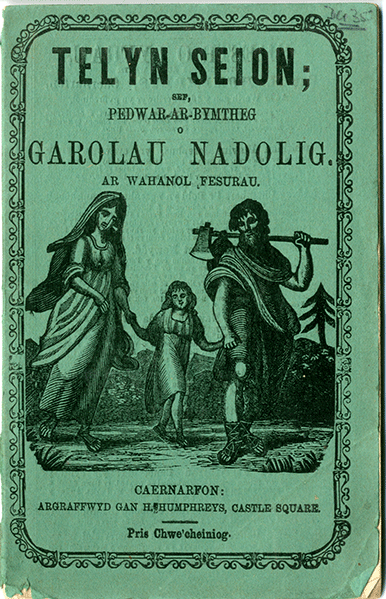

ARCHIVE OF THE MONTH: JANUARY 2020
This year, we continue with our Archive of the Month feature by highlighting interesting items from our collections that make us different from other institutions throughout Wales.
Occasionally, during 2020–2021, items of relevance to the theme “Outdoors” will be picked in order to reinforce the strengths of the Archives and Special Collections when it comes to adventure, sports, landscapes etc.
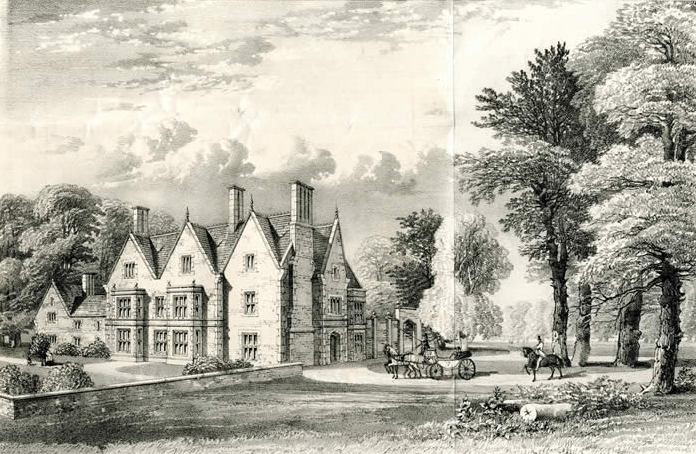
Drawing of Plas Gwyn Llanedwen
This drawing of Plas Gwyn, Llanedwen, Anglesey can be found in a sale catalogue dated 10 July 1856.
The sale was held at the Penrhyn Arms in Bangor and along with Plas Gwyn and the farms known as Llwynon, Llwynogan and Llwynogan Fawr, the lands of the Ysgubor Fawr estate in the parish of Llanidan were also for sale.
Plas Gwyn was the home of the antiquarian, Henry Rowlands (1655–1723), rector of Llanidan and author of Mona Antiqua Restaurata.
Some research has revealed that Plas Gwyn is now known as Plas Llwyn-Onn. Possibly a beneficial change of name since Plas Gwyn is a common name in Anglesey e.g. Plas Gwyn in Pentraeth, Plas Gwyn in Cerrigceinwen, Plas Gwyn in Llanfaelog and Plas Gwyn in Llanfair Mathafarn Eithaf!
Sale Catalogue No. 19
This “Archive of the Month” was created by Elen Wyn Simpson, Archivist
ARCHIVE OF THE MONTH: FEBRUARY 2020
This year, we continue with our Archive of the Month feature by highlighting interesting items from our collections that make us different from other institutions throughout Wales.
Occasionally, during 2020–2021, items of relevance to the theme “Outdoors” will be picked in order to reinforce the strengths of the Archives and Special Collections when it comes to adventure, sports, landscapes etc.
ARCHIVE OF THE MONTH: JANUARY 2019
During 2019 we will be celebrating a “Year of Discovery” which will be an opportunity to:
- look at inventive individuals who have carried out pioneering work in the fields of aeronautics, archaeology, mathematics, Celtic studies etc.
- find out about adventurous Welsh men and women who have travelled the world as settlers or missionaries
- discover more about new and exciting resources for researchers in the Archives and Special Collections
The “Year of Discovery” will enable us to build a multi-layered view of our collections – presenting our strengths and what makes us distinctive from other institutions throughout Wales.
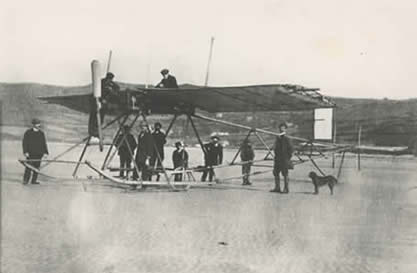
George Hartley Bryan (left) and the aeroplane known as “Bamboo Bird” at Traeth Coch, Anglesey (right)
George Hartley Bryan F.R.S (1864–1928)
George Hartley Bryan was Professor of Pure & Applied Mathematics at Bangor from 1896 until his retirement in 1926. In 1911 he published ‘Stability in aviation; an introduction to dynamical stability as applied to the motions of aeroplanes’, a book that established Bangor at the forefront of new scientific advances. The publication was the result of research in Bangor and the surrounding area on the stability of gliders, working with William Ellis Williams, a local student who graduated in physics and mathematics (he later became Professor in Electrical Engineering at the University) and Edgar Henry Harper, a member of staff, who assisted with the investigations. The importance of Bryan’s contribution to aeronautics was widely recognised in 1914 when he was presented with the gold medal of the Royal Aeronautical Society – the second ever awarded (the first was presented to the Wright Brothers).
The Papers of William Ellis Williams are held by the University Archives and Special Collections department.
Copyright: Photograph courtesy of Mrs. E.G. Williams.
This “Archive of the Month” was created by Lynette Hunter, Archivist
ARCHIVE OF THE MONTH: FEBRUARY 2019
During 2019 we will be celebrating a “Year of Discovery” which will be an opportunity to:
- look at inventive individuals who have carried out pioneering work in the fields of aeronautics, archaeology, mathematics, Celtic studies etc.
- find out about adventurous Welsh men and women who have travelled the world as settlers or missionaries
- discover more about new and exciting resources for researchers in the Archives and Special Collections
The “Year of Discovery” will enable us to build a multi-layered view of our collections – presenting our strengths and what makes us distinctive from other institutions throughout Wales.
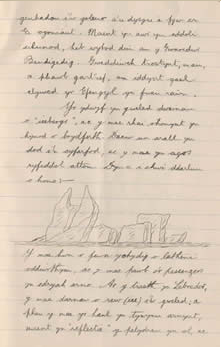

ARCHIVE OF THE MONTH: MARCH 2019
During 2019 we will be celebrating a “Year of Discovery” which will be an opportunity to :
- look at inventive individuals who have carried out pioneering work in the fields of aeronautics, archaeology, mathematics, Celtic studies etc.
- find out about adventurous Welsh men and women who have travelled the world as settlers or missionaries
- discover more about new and exciting resources for researchers in the Archives and Special Collections
The “Year of Discovery” will enable us to build a multi-layered view of our collections – presenting our strengths and what makes us distinctive from other institutions throughout Wales.
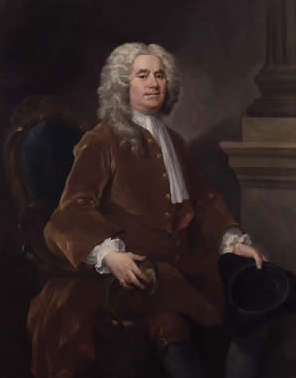
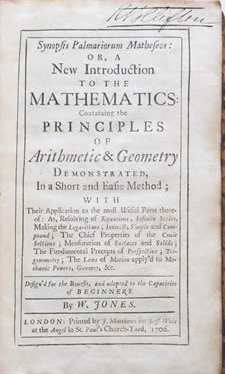
William Jones by William Hogarth, oil on canvas, 1740 ( © National Portrait Gallery, London 5734) along with the title page from his volume on arithmetic and geometry published in 1706
William Jones (1675–1749), Welsh mathematician and pioneer
On the 14th of March we celebrate pi day – the symbol π (Greek letter ‘pi’) used to designate the ratio of the circumference of a circle to its diameter, which is approximately 3.14159.
This day is also an opportunity for us to honour William Jones, the Welsh mathematician from Llanfihangel Tre’r Beirdd, Anglesey who became a fellow of the Royal Society in 1711 and was a close friend of Sir Isaac Newton and Sir Edmund Halley.
Jones’s publication Synopsis palmariorum matheseos, or, A new introduction to mathermatics appeared in 1706 and the symbol π was used to represent the ratio of the circumference of a circle to its diameter for the first time in this book.
Today π is instantly recognised worldwide but few know that its history can be traced back to a small village in the heart of Anglesey.
This “Archive of the Month” was created by Elen Wyn Simpson, Archivist
ARCHIVE OF THE MONTH: APRIL 2019
During 2019 we will be celebrating a “Year of Discovery” which will be an opportunity to:
- look at inventive individuals who have carried out pioneering work in the fields of aeronautics, archaeology, mathematics, Celtic studies etc.
- find out about adventurous Welsh men and women who have travelled the world as settlers or missionaries
- discover more about new and exciting resources for researchers in the Archives and Special Collections
The “Year of Discovery” will enable us to build a multi-layered view of our collections – presenting our strengths and what makes us distinctive from other institutions throughout Wales.
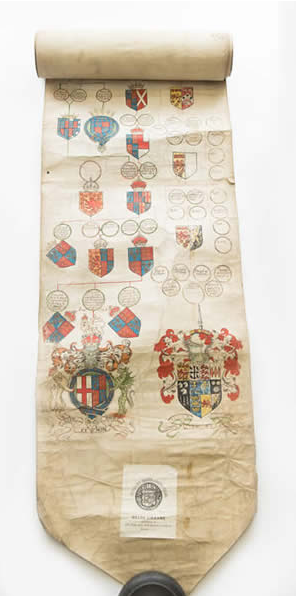
Pedigree roll of John ap William ap Dafydd of Euarth Uchaf, Llanfair Dyffryn Clwyd, Denbighshire, 1584 (Penrhos I/546)
In this “Year of Discovery” we are inviting students to visit the Archives and Special Collections to discover more about our wonderful resources.
As part of the ‘Documents and Sources’ module in the School of History, Philosophy and Social Sciences, a group of medieval and early-modern postgraduate students were invited to undertake an initial analysis of this 16th century pedigree roll, under the supervision of Dr Shaun Evans of the Institute for the Study of Welsh Estates.
Pedigree rolls became popular in Wales in the 16th century and are testimony to the pride in ancestry felt by many Welsh families.
You can read the article written by Kimberly Jussila and Callum Dickson about this document in our current Newsletter.
This “Archive of the Month” was created by Elen Wyn Simpson, Archivist
ARCHIVE OF THE MONTH: MAY 2019
During 2019 we will be celebrating a “Year of Discovery” which will be an opportunity to :
- look at inventive individuals who have carried out pioneering work in the fields of aeronautics, archaeology, mathematics, Celtic studies etc.
- find out about adventurous Welsh men and women who have travelled the world as settlers or missionaries
- discover more about new and exciting resources for researchers in the Archives and Special Collections
The “Year of Discovery” will enable us to build a multi-layered view of our collections – presenting our strengths and what makes us distinctive from other institutions throughout Wales.
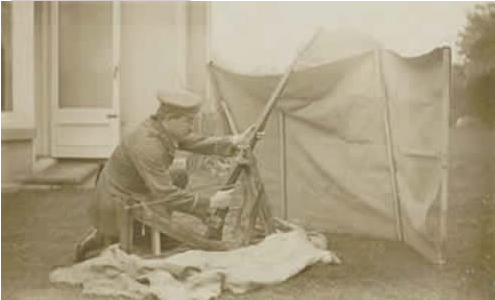
Photo of W.S. Kneeshaw invention that he intends to patent, sent to Mr Trevor of Carter Vincent, Solicitors, Bangor.
Wilfred Shafto Kneeshaw was the only son of Henry Kneeshaw of Penmaenmawr (JP, Deputy Lieutenant, Sheriff of Caernarvonshire). He began his military career as a Private with the Royal Welsh Fusiliers (later Lieutenant) and later became a Captain in the 66th Training Reserve of the Welsh Regiment. He was badly wounded in August 1915 and, whilst recovering, spent his time researching and inventing a rifle stand, an idea which possibly came from his direct experience of warfare in the trenches. He took out a Patent for his invention in March 1916:
“Patent: 101,441. Machine rests for.-Consists of a rifle stand for use when firing a rifle grenade. The stand comprises a front support 11 having at the top a pivoted fork 13 for the forepart of the rifle, and an inclined trough or guideway 15 for the butt of the rifle. The butt rests on a padded shoe 19 adapted to be adjusted along the trough 15, which may be graduated, by a handle 26. The shoe can be clamped in position by a screw and nut 22, 24”
Cited from: European Patent Office, GB101441 (A) – Rifle Stand for Use when Firing a Rifle Grenade, Application number: GB19160004302 19160323
This “Archive of the Month” was created by Lynette Hunter, Archivist

ARCHIVE OF THE MONTH: JUNE 2019
During 2019 we will be celebrating a “Year of Discovery” which will be an opportunity to :
- look at inventive individuals who have carried out pioneering work in the fields of aeronautics, archaeology, mathematics, Celtic studies etc.
- find out about adventurous Welsh men and women who have travelled the world as settlers or missionaries
- discover more about new and exciting resources for researchers in the Archives and Special Collections
The “Year of Discovery” will enable us to build a multi-layered view of our collections – presenting our strengths and what makes us distinctive from other institutions throughout Wales.

This recipe entitled “My Own Cake” is take from the 18th century recipe book of Elizabeth Morgan which is to be found within the Henblas Estate Collection. (Henblas Ms 14)
Elizabeth Morgan of Henblas near Llangristiolus in Anglesey died in 1773. She was the wife of Henry Morgan of Henblas, son of a Chancellor of Bangor and the daughter of Dr John Davies, rector of Kingsland in Herefordshire.
In addition to this volume of recipes and medicines she also wrote a gardening diary and kept an account book which can be seen in an exhibition at Storiel (Bangor Museum) until November 2019. On display also is her portrait and beautiful embroidered dress.
The “Elizabeth Morgan : 18th century Gardener” exhibition is accompanied by a programme of related events. See the Storiel website for further information : https://www.storiel.cymru/whats-on/elizabeth-morgan/
This “Archive of the Month” was created by Elen Wyn Simpson, Archivist
ARCHIVE OF THE MONTH: JULY 2019
During 2019 we will be celebrating a “Year of Discovery” which will be an opportunity to:
- look at inventive individuals who have carried out pioneering work in the fields of aeronautics, archaeology, mathematics, Celtic studies etc.
- find out about adventurous Welsh men and women who have travelled the world as settlers or missionaries
- discover more about new and exciting resources for researchers in the Archives and Special Collections
The “Year of Discovery” will enable us to build a multi-layered view of our collections – presenting our strengths and what makes us distinctive from other institutions throughout Wales.
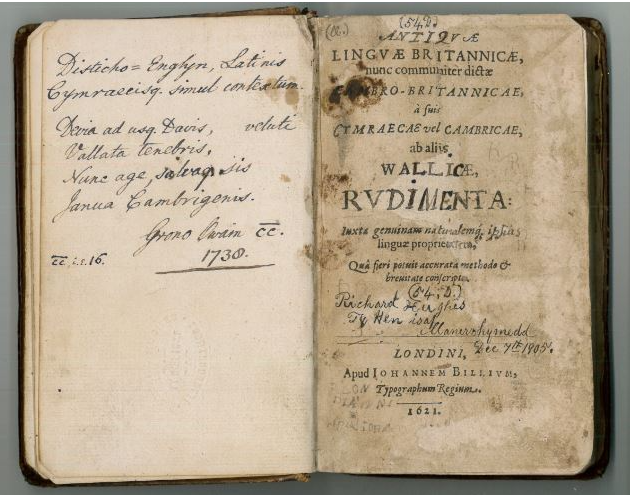
Antiquae linguae britannicae, nunc vulgò dictae cambrobritannicae, a suis cymraecae vel cambricae, ab aliis wallicae, et lingvae latinae, dictionarium duplex. Prius britannico-latinum ... Posterius latino-britannicum. Accesserunt Adagia britannica, & plura & emendatiora, quàm antehàc edita.
John Davies (1567–1644)
Londini, impress. in aedibus R. Young, impensis J. Davies, & prostat venale ... apud Franciscum Constable
1632
This 1621 Welsh grammar in Latin written by John Davies of Mallwyd can currently be seen in the exhibition case in the Main Library foyer.
This copy has copious manuscript notes, including some in the hand of Lewis Morris, one of the famous Morris brothers of Anglesey, together with a Latin englyn by one of Wales’s most famous poets of the 18th century, Goronwy Owen.
The item forms part of our current annual exhibition.
This exhibition is a celebration of Bangor University’s substantial contribution to scholarship in the field of Welsh and Celtic studies and also aims to commemorate some of the remarkable individuals who contributed to that endeavour. It has been arranged to coincide with the visit of the XVIth International Congress of Celtic Studies to Bangor University on 22–26 July 2019. The Congress is the foremost international gathering of scholars researching the languages, literatures and cultural traditions of the Celtic-speaking peoples. Held once every four years, this will be its first visit to Bangor.
This “Archive of the Month” was created by Lynette Williams, Archivist
ARCHIVE OF THE MONTH: AUGUST 2019
During 2019 we will be celebrating a “Year of Discovery” which will be an opportunity to:
- look at inventive individuals who have carried out pioneering work in the fields of aeronautics, archaeology, mathematics, Celtic studies etc.
- find out about adventurous Welsh men and women who have travelled the world as settlers or missionaries
- discover more about new and exciting resources for researchers in the Archives and Special Collections
The “Year of Discovery” will enable us to build a multi-layered view of our collections – presenting our strengths and what makes us distinctive from other institutions throughout Wales.
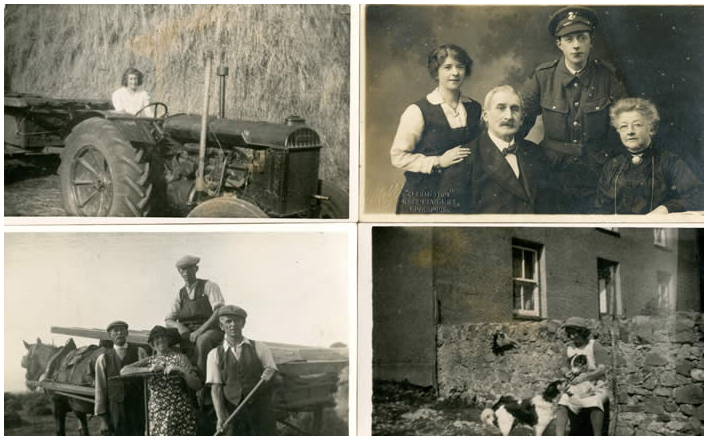
A new discovery – photographs from the Talwrn area, Anglesey
Last month, the Archives and Special Collections received a parcel of photographs in the post from an unknown donor. The parcel contained an interesting collection of black and white family photographs dating to the early part of the 20th century. Having studied the sparse information written on the backs of these pictures we came to the conclusion that they belonged, at one time, to Elizabeth [Elsie] Mary Owen of Rhyd, Talwrn. They certainly provide an interesting snapshot into rural life on Anglesey, but how sad that we cannot put names to some of the faces!
Here is a small selection.
This “Archive of the Month” was created by Elen Wyn Simpson, Archivist
ARCHIVE OF THE MONTH: SEPTEMBER 2019
During 2019 we will be celebrating a “Year of Discovery” which will be an opportunity to:
- look at inventive individuals who have carried out pioneering work in the fields of aeronautics, archaeology, mathematics, Celtic studies etc.
- find out about adventurous Welsh men and women who have travelled the world as settlers or missionaries
- discover more about new and exciting resources for researchers in the Archives and Special Collections
The “Year of Discovery” will enable us to build a multi-layered view of our collections – presenting our strengths and what makes us distinctive from other institutions throughout Wales.

The “diary letters” of Nansi Mary Pugh
In keeping with the theme of DISCOVERY, it is important to remember that the Archives and Special Collections continues to accept new and exciting material which is believed to be of research value and which relates to existing collections held by the University.
Last year, we received the Papers of Nansi Mary Pugh (1918–2014).
She was the daughter of the Rev. E. Cynolwyn Pugh (1883–1962) who emigrated to the USA in 1928 to work as a minister in Chicago and who later moved to work and live in New York with his wife and three daughters. The family were prominent members of the Welsh community in New York and entertained the likes of Richard Burton and Hugh Griffith at their home.
The collection consists of very detailed “diary letters”(see above) written by Nansi between 1946–1953 amongst other family papers.
This “Archive of the Month” was created by Elen Wyn Simpson, Archivist
ARCHIVE OF THE MONTH: OCTOBER 2019
During 2019 we will be celebrating a “Year of Discovery” which will be an opportunity to:
- look at inventive individuals who have carried out pioneering work in the fields of aeronautics, archaeology, mathematics, Celtic studies etc.
- find out about adventurous Welsh men and women who have travelled the world as settlers or missionaries
- discover more about new and exciting resources for researchers in the Archives and Special Collections
The “Year of Discovery” will enable us to build a multi-layered view of our collections – presenting our strengths and what makes us distinctive from other institutions throughout Wales.

Photograph of a portrait of Ellin Williams, youngest daughter of Sir John Williams, Bart. of Bodelwyddan (1809–1876) who married the Hon. William Owen Stanley of Penrhos (1802–1884). (Bangor Ms 28761)
Ellen’s Tower or Tŵr Ellin in Holyhead was erected by her in 1868 and the building in now used by the RSPB as an information centre and observation tower to study the wildlife of South Stack.
On the 9th of October Dr Gareth Huws will deliver the Annual Lecture of the Archives and Special Collections and he will be concentrating on three generations of the Stanley family who lived at Penrhos, Holyhead between 1760 and 1880.
This “Archive of the Month” was created by Elen Wyn Simpson, Archivist
ARCHIVE OF THE MONTH: NOVEMBER 2019
During 2019 we will be celebrating a “Year of Discovery” which will be an opportunity to:
- look at inventive individuals who have carried out pioneering work in the fields of aeronautics, archaeology, mathematics, Celtic studies etc.
- find out about adventurous Welsh men and women who have travelled the world as settlers or missionaries
- discover more about new and exciting resources for researchers in the Archives and Special Collections
The “Year of Discovery” will enable us to build a multi-layered view of our collections – presenting our strengths and what makes us distinctive from other institutions throughout Wales.
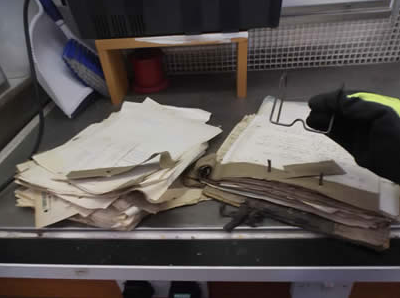
Records of the Mona and Parys Mines Co. Ltd. – photographs taken during and after the conservation project
UNEARTHING ANGLESEY’S MINING HERITAGE
A grant of over £8,000 received from the National Manuscript Conservation Trust and the Welsh Government has enabled the Archives and Special Collections to make the Records of the Mona and Parys Mines Co. Ltd. accessible to all.
The collection, consisting of ledgers and files of correspondence dating between 1786 and 1958, had previously been inaccessible to readers due to their physical condition – being extremely dirty with evidence of mould and insect attack and contamination with guano in some instances.
The cleaning, conservation and packaging project will enable the archivist undertake cataloguing work and ensure the long-term preservation of the collection.
It is believed that this project will create a renewed interest in business, industrial and mining records at Bangor University and will assist researchers to build upon their existing knowledge of this important industry – using it in conjunction with other similar documents in the care of Bangor University, in particular, the Mona Mine Papers and the Records of the Williams and Grenfell’s Copper Smelting Firm.
This “Archive of the Month” was created by Elen Wyn Simpson, Archivist
ARCHIVE OF THE MONTH: DECEMBER 2019
During 2019 we will be celebrating a “Year of Discovery” which will be an opportunity to :
- look at inventive individuals who have carried out pioneering work in the fields of aeronautics, archaeology, mathematics, Celtic studies etc.
- find out about adventurous Welsh men and women who have travelled the world as settlers or missionaries
- discover more about new and exciting resources for researchers in the Archives and Special Collections
The “Year of Discovery” will enable us to build a multi-layered view of our collections – presenting our strengths and what makes us distinctive from other institutions throughout Wales.

A handmade advent calendar created by the children of the Wynne Family of the Garthewin Estate, Llanfair Talhaiarn, 1950s.
The advent calendar can be traced to Germany to the mid 19th century and is a tradition which grew from the Protestant custom of marking doors with chalk or lighting candles to count down the days leading to Christmas. The first printed advent calendars appeared around 1905.
This “Archive of the Month” was created by Lynette Williams, Archivist
ARCHIVE OF THE MONTH: JANUARY 2018
The Archive of the Month feature raises awareness amongst students and staff about the variety of material that we hold. In particular, the old Bangor photographs appear to spark a lot of interest and debate on the University’s Facebook pages.
Every month, an item is selected to be showcased. The item is scanned and a short piece of text written about its history.
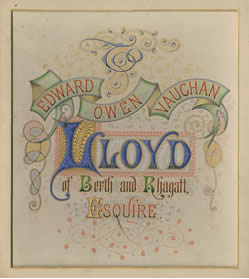
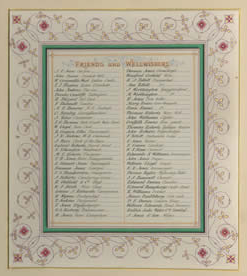
These images were taken from an illuminated coming of age album, presented to Edward Owen Vaughan Lloyd of Berth (Merionethshire) and Rhagatt (Denbighshire) in 1878. [Bangor Ms 40222]
The album consists of 7 pages within velvet covers with metal mounts. It includes an address, a list of tenants and a list of "Friends and well-wishers".
Edward Owen Vaughan Lloyd (1857-1914) succeeded his uncle, John Lloyd, to the Rhagatt estate. He became JP for Merioneth and served as High Sheriff of both Merionethshire and Denbighshire. He had a deep interest in the history and culture of his native country and was an active member of both the Hon. Society of Cymmrodorion and the Gorsedd of the National Eisteddfod.
Deposited at the Archives and Special Collection in October 2017 by the Director of the Institute for the Study of Welsh Estates, Dr Shaun Evans.
This "Archive of the Month" was created by Elen Wyn Simpson, Archivist
ARCHIVE OF THE MONTH: FEBRUARY 2018
The Archive of the Month feature raises awareness amongst students and staff about the variety of material that we hold. In particular, the old Bangor photographs appear to spark a lot of interest and debate on the University’s Facebook pages.
Every month, an item is selected to be showcased. The item is scanned and a short piece of text written about its history.

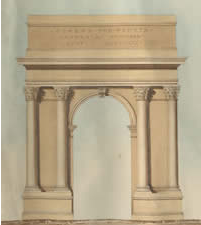
ARCH AT HOLYHEAD
Two coloured plans : the first (on the left) shows the original design by Chester based architect Thomas Harrison for the Triumphal Arch or Admiralty Arch which is situated on Salt Island, Holyhead. Alongside (on the right) is a proposed design for the arch by John Rennie who was the project engineer responsible for the port’s upgrading.
The arch was built in 1822-24 to commemorate George IV's landing at Holyhead on 7th August 1821 en route for Ireland. It was funded through public subscription and marks the northernmost section of the A5. The arch can be considered to complement London’s Marble Arch, built in 1828 and moved to its present location at the A5’s southernmost point in the 1850’s.
Recently calls have been made to relocate the arch to a more prominent spot in Holyhead.
This "Archive of the Month" was created by Ann Hughes, Archives Officer
ARCHIVE OF THE MONTH: MARCH 2018
The Archive of the Month feature raises awareness amongst students and staff about the variety of material that we hold. In particular, the old Bangor photographs appear to spark a lot of interest and debate on the University’s Facebook pages.
Every month, an item is selected to be showcased. The item is scanned and a short piece of text written about its history.
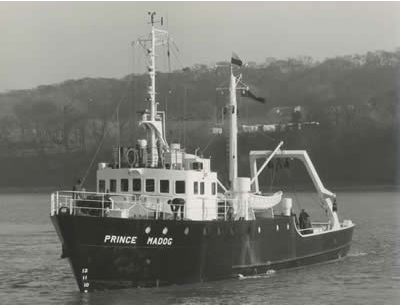
School of Ocean Sciences’ research vessel, Prince Madog.
This is a photo of the original vessel, which was commissioned in December 1965 and was delivered here in February 1968 – fifty years ago. The School of Ocean Sciences, Bangor, and other university departments in the UK also use the vessel as a teaching platform, training the next generation of marine scientists. She was named after the legendary marine explorer, Madog ab Owain Gwynedd, who discovered America during the twelfth century, according to folklore. The vessel was decommissioned in 2001 when a new vessel of the same name was commissioned.
You will be hearing more about the Prince Madog during the year due to the half-centenary celebrations.
This "Archive of the Month" was created by Heledd Haf Williams, Archives Assistant
ARCHIVE OF THE MONTH: APRIL 2018
The Archive of the Month feature raises awareness amongst students and staff about the variety of material that we hold. In particular, the old Bangor photographs appear to spark a lot of interest and debate on the University’s Facebook pages.
Every month, an item is selected to be showcased. The item is scanned and a short piece of text written about its history.
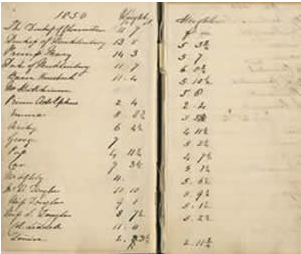
“Weight of Everybody” : An intriguing 19th century notebook
This image is taken from a notebook that contains various random figures dated between 1850 and 1902, which on closer inspection reveal themselves to be data regarding the height and weight of different individuals. It appears that many entries relate to members of the Pennant family of Penrhyn Castle, however, the names of quite a few important figures in society are also recorded. For example, in the very first few pages the weight and height of the Duchess of Gloucester, Princess Mary and Prince Adolphus are noted for the year 1850. The reason for creating such a record, simply entitled “Weight of everybody”, remains a mystery, as does the identity of the author. Considering the range of personal names noted in this book, it is easy to conclude that most of the visitors to the castle had their measurements recorded. The weighing chair no longer exists at Penrhyn Castle.
This "Archive of the Month" was created by Lynette Hunter, Archivist
ARCHIVE OF THE MONTH: MAY 2018
The Archive of the Month feature raises awareness amongst students and staff about the variety of material that we hold. In particular, the old Bangor photographs appear to spark a lot of interest and debate on the University’s Facebook pages.
Every month, an item is selected to be showcased. The item is scanned and a short piece of text written about its history.
BEETLE-MANIA!
![Photo of a plate from “Penser’s [sic.] Plates of beetles and weevils](/sites/default/files/styles/scale_900/public/2023-03/Beetle2.png?itok=0faeVjRj)
![Photo of a plate from “Penser’s [sic.] Plates of beetles and weevils](/sites/default/files/styles/scale_900/public/2023-03/Beetles.png?itok=ZiaqHona)
The Archive of the Month for May has attracted quite a lot of attention from University staff and those on the Archives and Special Collections mailing list.
As a result, we looked again at the large volume of coloured plates of various genera of beetles and weevils and discovered an accession number pencilled in the front cover.
Thankfully, the Archives houses the early accession books for the Library of the University College of North Wales and these revealed that the book was received by the University back in 1945 and that it was one of 2 volumes described as “Penser’s [sic.] Plates”.
The search was on for the missing second volume, which was soon discovered amongst the rare science books.
Loosely inserted into the first volume of plates was a note stating :
“Illustrations of German Coleoptera from ‘Fauna Insectorum Germanicae’ by G.W.F. Panzer being 1343 coloured plates of beetles taken mainly from the first edition of 1793-1809 and arranged alphabetically by genera and species in two volumes”.
A letter and invoice revealed further that the items were purchased by an F. Talfourd Jones Esq. of Llanfairfechan in 1930 from Bernard Halliday, Bookseller of Leicester for the princely sum of £5 5 shillings along with 2s 4d for carriage.
The two volumes of “Panzer’s Plates” were later donated to the University in 1945.
This "Archive of the Month" was created by Elen Wyn Simpson, Archivist
ARCHIVE OF THE MONTH: JUNE 2018
The Archive of the Month feature raises awareness amongst students and staff about the variety of material that we hold. In particular, the old Bangor photographs appear to spark a lot of interest and debate on the University’s Facebook pages.
Every month, an item is selected to be showcased. The item is scanned and a short piece of text written about its history.
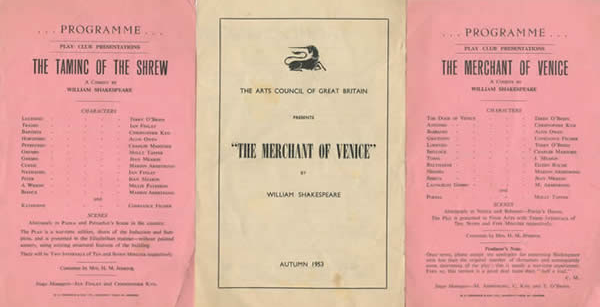
These 3 programmes of Shakesperean productions, staged in the 1940's and 1950's, belong to the Alun Owen Papers.
Before embarking on a successful career as a playwright, Alun Owen travelled the country as an actor. His name appears on the list of characters for these plays, but he is best known for writing the screenplay for the Beatles film "A Hard Day's Night" in the 1960's.
The Archives and Special Collections currently has an exhibition of manuscripts and rare books on a Shakesperean theme, to mark the visit of the Globe Theatre to Pontio.
This "Archive of the Month" was created by Elen Wyn Simpson, Archivist
ARCHIVE OF THE MONTH: JULY 2018
The Archive of the Month feature raises awareness amongst students and staff about the variety of material that we hold. In particular, the old Bangor photographs appear to spark a lot of interest and debate on the University’s Facebook pages.
Every month, an item is selected to be showcased. The item is scanned and a short piece of text written about its history.
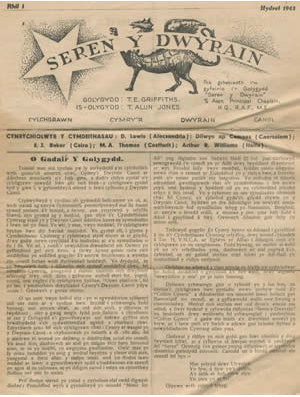
mongst the collection of Cynan Papers is a series of the “community newspaper”, Seren y Dwyrain (CYN/228). The Welsh newspaper served Cairo and the Middle East and its intention was to be a link between Welsh institutes and to strengthen the connection between Wales and those who served in the armed forces up until the end of the Second World War.
The man responsible for establishing the newspaper was T. Elwyn Griffith, who died recently at the age of 100. The idea came whilst he was serving as a Flying Officer with the Royal Air Force in Cairo and the paper then became the stimulus behind the establishment of the Undeb y Cymry ar Wasgar (Union of Welsh Diaspora) in 1948; which is known today as the Undeb Cymru a’r Byd (Wales International).
T. Elwyn Griffith (1918-2018) was originally from Llandybïe, Carmarthenshire, but spent most of his life in Caeathro, Gwynedd.
This "Archive of the Month" was created by Elen Wyn Simpson, Archivist
ARCHIVE OF THE MONTH: AUGUST 2018
The Archive of the Month feature raises awareness amongst students and staff about the variety of material that we hold. In particular, the old Bangor photographs appear to spark a lot of interest and debate on the University’s Facebook pages.
Every month, an item is selected to be showcased. The item is scanned and a short piece of text written about its history.
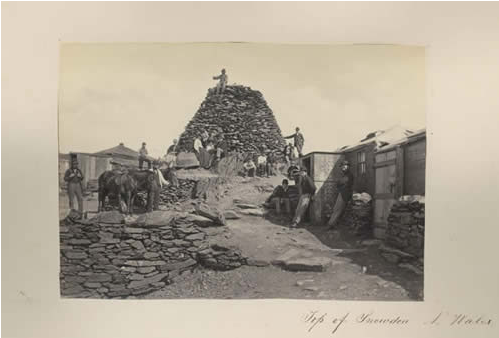
Photograph of the summit of Snowdon
Amongst the uncatalogued papers of Brigadier Arthur Pelham Trevor (1909-1984) of Beaumaris there is a photograph album that once belonged to an ancestor of his of the name Enviqueta Bokenham Trevor. This particular photograph from the album stands out since it was possibly taken before the construction of the Snowdon Mountain Railway which opened in 1896. Prior to this date, ponies used to take tourists to the summit.
This "Archive of the Month" was created by Elen Wyn Simpson, Archivist
ARCHIVE OF THE MONTH: SEPTEMBER 2018
The Archive of the Month feature raises awareness amongst students and staff about the variety of material that we hold. In particular, the old Bangor photographs appear to spark a lot of interest and debate on the University’s Facebook pages.
Every month, an item is selected to be showcased. The item is scanned and a short piece of text written about its history.
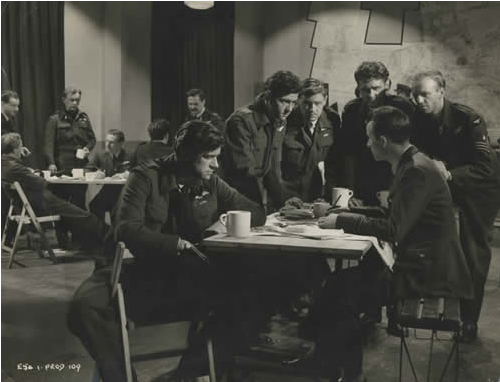
DAM BUSTERS
It is 75 years since the World War II attack on German dams by Squadron 617 of the Royal Air Force. The attack was called “Operation Chastise” but is also known as the “Dam Busters”.
This photograph was taken on the set of the 1955 film “The Dam Busters”. Standing third from the right is the actor Alun Owen (1925-1994), who became a screenwriter and is most famous for writing the screenplay for the Beatles film, “A Hard Day’s Night”. His collection of papers, including notebooks, scripts, theatre programmes and photographs, is held here at Bangor University.
The Archives and Special Collections is also the custodian of the Papers of Sergeant Ivor Glyn Jones (1921-1943) who was an Air Gunner with Squadron 617 (Bangor Mss 38009-38057)
This "Archive of the Month" was created by Elen Wyn Simpson, Archivist
ARCHIVE OF THE MONTH: OCTOBER 2018
The Archive of the Month feature raises awareness amongst students and staff about the variety of material that we hold. In particular, the old Bangor photographs appear to spark a lot of interest and debate on the University’s Facebook pages.
Every month, an item is selected to be showcased. The item is scanned and a short piece of text written about its history.
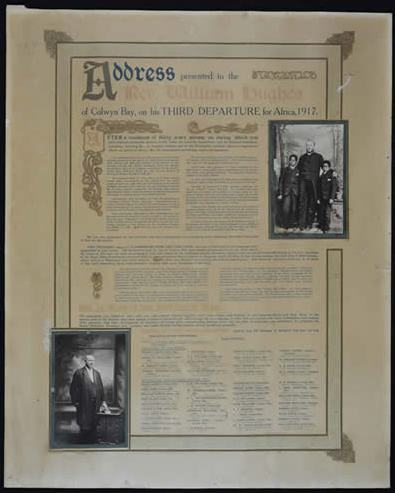
AFRICAN INSTITUTE (COLWYN BAY)
Black History Month provides us with an opportunity to showcase the records held by the Archives and Special Collections that link Colwyn Bay with Africa.
This is an address presented to the Rev. William Hughes of Colwyn Bay, on his third departure for Africa in 1917
William Hughes was born in 1856 in Rhoslan, Eifionydd who became a missionary in Africa before setting up a training college in Colwyn Bay for African young men. According to his book “Dark Africa and the way out” published in 1892, the college was established “..in the hope that many of them [young men] will return to their native land either as missionaries, schoolmasters or useful handicraftsmen – such as carpenters, blacksmiths, masons, bricklayers, wheelwrights, tailors etc.”
The address provides information relating to the services of the Rev. William Hughes to the town of Colwyn Bay with reference to the establishment of the African Institute at Colwyn Bay. Undersigned are the names of “Ministers of the Gospel” and “Councillors, Magistrates, Doctors etc.” It also includes 2 photographs – one of the Rev. William Hughes on his own and the other with two of his pupils, Kinkasa (aged 11) and Nkanza (aged 8).
This "Archive of the Month" was created by Elen Wyn Simpson, Archivist
ARCHIVE OF THE MONTH: NOVEMBER 2018
The Archive of the Month feature raises awareness amongst students and staff about the variety of material that we hold. In particular, the old Bangor photographs appear to spark a lot of interest and debate on the University’s Facebook pages.
Every month, an item is selected to be showcased. The item is scanned and a short piece of text written about its history.

The Diaries of Dr. Gwilym Pari Huws, 1916-1919
Three small pocket diaries belonging to Dr Gwilym Pari Huws, written whilst on active service with Section B, Welsh Company, of the Royal Army Medical Corps (RAMC) during the First World War. They briefly record his daily duties, movements and significant events, providing a snapshot of the everyday life of a Private serving in the RAMC during the conflict. Many of his entries relate to his time working on the Hospital Ships HMAT Valdivia and the HMAT Warilda. He was on board the latter when it was torpedoed by the German submarine UC-49 on the 3rd August 1918. This was despite being marked clearly with the Red Cross.
Gwilym Pari Huws was born in Blaenau Ffestiniog, Merioneth in 1894, the son of Rev. William Pari Huws, Congregational minister, originally of Dolwyddelan and grandson of William Hughes, also known as Gwilym Prysor.
Gwilym attended the University College of North Wales, Bangor, to follow an art degree course, but his course was disrupted by the outbreak of the First World War. After serving in the Middle East he returned to education and studied at Liverpool to become a Doctor. He worked as a General Practitioner at Blaenau Ffestiniog and Old Colwyn.
He was a poet, but he also enjoyed collecting poems and verses (englynion) composed by others. He was a deacon at Salem Church, Colwyn Bay and died on 21 June 1979.
A collection of his poetry was published in 1983 entitled Awen y Meddyg.
This "Archive of the Month" was created by Lynette Hunter, Archivist
ARCHIVE OF THE MONTH: DECEMBER 2018
The Archive of the Month feature raises awareness amongst students and staff about the variety of material that we hold. In particular, the old Bangor photographs appear to spark a lot of interest and debate on the University’s Facebook pages.
Every month, an item is selected to be showcased. The item is scanned and a short piece of text written about its history.
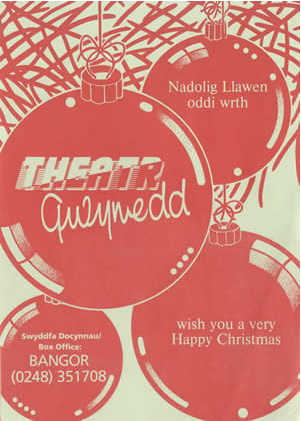

Theatre Gwynedd Christmas Programme, 1987-1988
The Christmas show for that year was ‘Codi Stêm’ - a Hwyl a Fflag production written by Gwen Ellis and Gruffudd Jones. Hwyl a Fflag was a theatre company that ran from 1981 to 1995 and which was based in the Tabernacl Chapel in Bangor from 1983 to 1992.
The programme also reveals that in that year Cwmni Whare Teg were on tour with the pantomime ‘Jiw Jiw Jeifin Jenkins’ and Bangor Panto Co. were performing ‘Jack and the Beanstalk’
This "Archive of the Month" was created by Ann Hughes, Senior Archives Assistant.
ARCHIVE OF THE MONTH: JANUARY 2017
The Archive of the Month feature raises awareness amongst students and staff about the variety of material that we hold. In particular, the old Bangor photographs appear to spark a lot of interest and debate on the University’s Facebook pages.
Every month, an item is selected to be showcased. The item is scanned and a short piece of text written about its history.
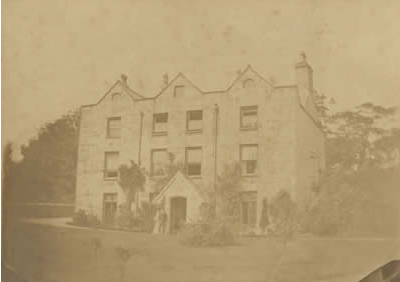
This rare photograph of a man standing outside Penrallt in Upper Bangor is to be found among the Penrhyn Castle Papers at the University Archives.
The photographer was C. Richard of High Street, Bangor and written underneath the photograph is, ‘‘Penrallt, The Property of Lord Penrhyn with the respectful compliments of the Tenants”.
In 1902 George Sholto Gordon, the second Lord Penrhyn, sold Penrallt house and surrounding land to Bangor City Council. In 1904, this land, along with part of the Bishop’s estate, was presented by the City Council to the University College of North Wales and the site became the College’s permanent home.
According to the historian, J. Gwynn Williams, in 1907, when King Edward VII visited Bangor and laid the foundation-stone for the new University College of North Wales building, “Many sought a vantage point on the crags above the town and on the plateau below Penrallt, where the ash, beech, maple and oak grew, there was a clearing for one thousand two hundred children ready to form a living Union Jack.”
It is believed that Penrallt house used to be located where the tower of the main University building now stands. The road which leads from College Road past the University’s Brigantia building is called Penrallt Road.
This “Archive of the Month” was created by our Archives Assistant, Nesta Roberts.
ARCHIVE OF THE MONTH: FEBRUARY 2017
The Archive of the Month feature raises awareness amongst students and staff about the variety of material that we hold. In particular, the old Bangor photographs appear to spark a lot of interest and debate on the University’s Facebook pages.
Every month, an item is selected to be showcased. The item is scanned and a short piece of text written about its history.
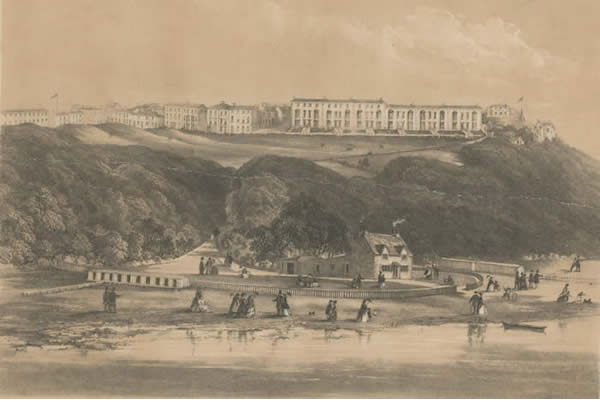
Illustration, by J.J. Dodd, depicting the Siliwen open-air swimming Baths, formerly located in upper Bangor.
Originally established in 1856 by private owners, the Baths were later purchased and renovated by the local council who saw their potential as a tourist attraction. Changing huts were built and modifications were made to the shoreline in order to facilitate swimming. Although popular with the locals, they were not without issue. Due to the nature of their design, their use was limited to the hours around high-tide, and the natural environment of the Menai Straits meant that they had a tendency to accumulate mud and slime.
After the huts were damaged during a storm in 1899, the council resolved to rectify these problems and, in 1902, the baths reopened, featuring improved facilities and permitting the practice of mixed bathing.
In 1958, declining public interest and an increase in the levels of water pollution in the straits led to the spot’s closure. In replacement, the council commissioned an indoor facility, located on Garth Road, which opened to the public in October 1966, and remains there to this day.
This “Archive of the Month” was created by Callum Parry
ARCHIVE OF THE MONTH: MARCH 2017
The Archive of the Month feature raises awareness amongst students and staff about the variety of material that we hold. In particular, the old Bangor photographs appear to spark a lot of interest and debate on the University’s Facebook pages.
Every month, an item is selected to be showcased. The item is scanned and a short piece of text written about its history.
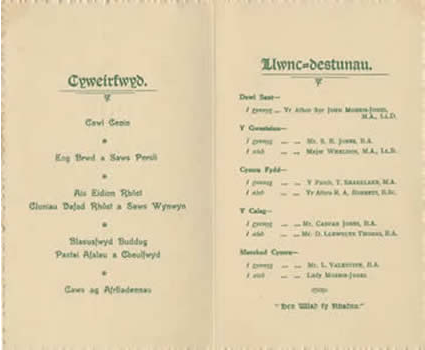
Menu of a St. David's Day Lunch at the British Hotel, Bangor, 1921
For many years it was customary for the great and the good of the University to celebrate St David’s Day with a spectacular dinner.
Here is the menu for the feast held in 1921 at the British Hotel. Amongst the guests were Sir John Morris-Jones and his wife, the Rev. Thomas Shankland, Lewis Valentine and Major Wheldon.
On the menu were :
Leek soup (cawl cenin)
Warm salmon (eog brwd)
Rib of beef (ais eidion)
Roast leg of mutton (cluniau dafad rhost)
Jelly (ceulfwyd)
Cheese and biscuits (caws ac afrlladennau)
ARCHIVE OF THE MONTH: APRIL 2017
The Archive of the Month feature raises awareness amongst students and staff about the variety of material that we hold. In particular, the old Bangor photographs appear to spark a lot of interest and debate on the University’s Facebook pages.
Every month, an item is selected to be showcased. The item is scanned and a short piece of text written about its history.

School exercise book belonging to Sir John Morris-Jones, when he was a pupil at Friars School, Bangor.
Morris-Jones was in attendance at Friars School from 1876-1879. He later became a scholar, poet and Professor of Welsh at UCNW (Bangor University).
The book features his student translation of Book II, Chapter I of Xenophon’s Anabasis. Detailed is a hand-drawn frontispiece featuring figures from the work.
Friars School was founded in 1568 ‘for the better education or bringing up of poor men’s children’ as stipulated in the will of the lawyer Geoffrey Glynne. Glynne had acquired Bangor friary in 1552-3, after it had been seized by the Crown in 1538-9, and bequeathed it, along with additional land and funds, specifically for the purpose of housing a grammar school.
The original site of the school is noted in John Speed’s 1610 map of Bangor, a copy of which is held at Bangor University archives. The school buildings, having fallen into disrepair, were relocated in 1789. A plaque, made in commemoration of the move, describes them as having once ‘stood near the river, but in course of time, being nearly in ruins, […] were removed and happily restored’.
In 1882, the city of Bangor underwent a typhoid epidemic, prompting the governors to temporarily relocate the school at Penmaenmawr. It soon resumed its place in Bangor, but the incident attracted greater scrutiny upon its facilities, and the governors were convinced that they had become unsuited for the requirements of a modern public school.
The premises was relocated to Friddoedd Road in 1900, where it was to remain unchanged until 1971 when the school adopted a co-educational policy and expanded its premises to an additional site on Eithinog Road. In 1999, the Eithinog site underwent renovation and the school was moved there exclusively, where it remains to this day.
This "Archive of the Month" was created by Callum Parry.
ARCHIVE OF THE MONTH: MAY 2017
The Archive of the Month feature raises awareness amongst students and staff about the variety of material that we hold. In particular, the old Bangor photographs appear to spark a lot of interest and debate on the University’s Facebook pages.
Every month, an item is selected to be showcased. The item is scanned and a short piece of text written about its history.
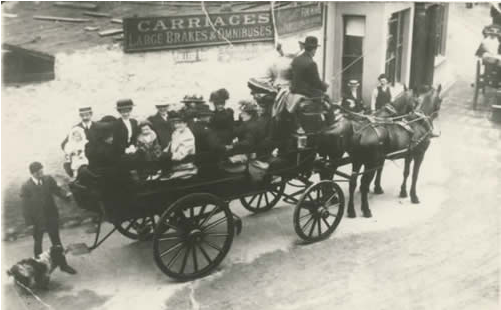
Photograph taken outside a hire firm in Upper Bangor around the end of the 19th century. The company, advertising “Carriages: Large Brakes & Omnibuses” for hire, was located on College Road, near the junction with Holyhead Road. The Belle Vue public house can be seen on the right.
The people on the carriage are very smartly dressed – on their way back from the “Garth Ferry” perhaps?
This "Archive of the Month" was created by Heledd Haf Williams
ARCHIVE OF THE MONTH: JUNE 2017
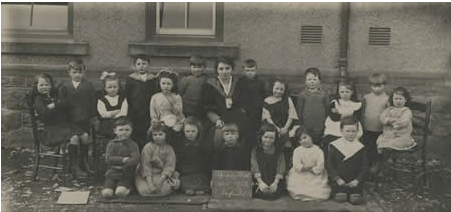
A photograph of a class in Cefnfaes School, Bethesda, in April 1922 with the teacher, Jennie Thomas. She was the creator of Wil Cwac Cwac. Jennie Thomas was born in Birkenhead to Welsh parents; and studied at Liverpool University before settling in Bethesda. She co-wrote Llyfr Mawr y Plant with J. O. Williams. Llyfr Mawr y Plant was a pioneering Welsh book for children, containing a variety of stories; and the characters Wil Cwac Cwac (a little yellow duck) and Siôn Blewyn Coch (a fox) were created for its first volume in 1931. Both characters entertained generations of Welsh children, and were turned into animated characters during the 1980s.
This "Archive of the Month" was created by Heledd Haf Williams
ARCHIVE OF THE MONTH: JULY 2017
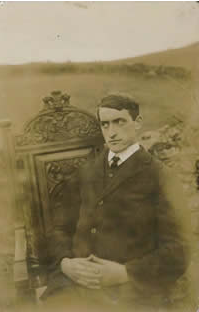
‘Hedd Wyn’ was born Ellis Humphrey Evans at Yr Ysgwrn, the family farm in Trawsfynydd, on the 13th January 1887, to Evan Evans and Mary Morris. He received his education at the local elementary school and Sunday school, but his self-education went on unceasingly. On leaving school aged 14 Ellis helped on the farm with his father working largely as a shepherd, but he continued valiantly to educate himself. His aptitude for poetry became evident at an early age and he took part in numerous competitions and local eisteddfodau, winning his first of 6 chairs (Cadair y Bardd) in Bala in 1907 at the age of 20 for his ode ‘Y Dyffryn’ (The Valley).
In October 1916 Hedd Wyn began composing his ode ‘Yr Arwr’ which he planned to enter for the Chair Competition of the National Eisteddfod to be held in Birkenhead, 1917. Before he could finish his piece he was conscripted into the 15th Battalion of the Royal Welch Fusiliers and sailed to France in June 1917. In early July he was in the Ypres Salient and there in the mud of the trenches he completed the ode. Bearing the pseudonym “Fleur de Lys” he posted his work back to Wales on the 15th July 1917. On July 31st Hedd Wyn went over the top with his regiment in a major offensive to capture ‘Pilckem Ridge’ in what would become known as the Battle of Passchendaele. Men were falling on all sides, amongst them Hedd Wyn who was mortally wounded.
This "Archive of the Month" was created by Lynette Hunter, Archivist
ARCHIVE OF THE MONTH: AUGUST 2017
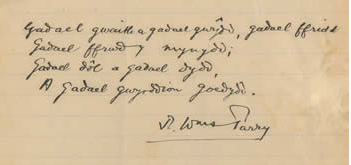

This piece of paper was discovered in a note book within the Cynan Papers which were received by the Archives and Special Collections last year. This collection has now been catalogued by a second year student working on an internship over the Summer at the Archives.
Cynan served as an ambulance man and later as a company’s pastor during the First World War. He was involved in the modernisation of the National Eisteddfod and won the crown three time and the chair once.
Professor Gerwyn Williams will be lecturing at the Literary Pavilion at the National Eisteddfod, in the company of the soprano Marian Roberts, on the 6th of August at 1.15pm on the subject of “Cynan and Anglesey”.
This "Archive of the Month" was created by Elen Wyn Simpson, Archivist
ARCHIVE OF THE MONTH: SEPTEMBER 2017
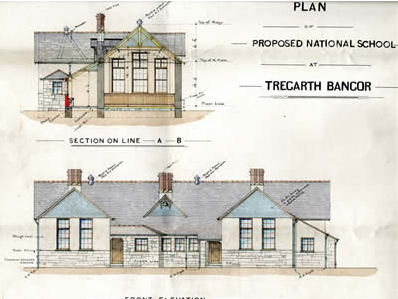
Plan of ‘Proposed National School at Tregarth Bangor’ which includes section and front elevation drawings. Approval for the plan was given on the the 18th of June 1896, and signed by J.Williams and Watkin Jones.
This plan comes from the Penrhyn Castle collection which is now available in its entirety to the public at the University Archives, following the completion of a cataloguing project last year.
This "Archive of the Month" was created by Ann Hughes, Archives Officer
ARCHIVE OF THE MONTH: OCTOBER 2017
These images have been taken from the diary and journal of William Owen Stanley, former MP for Anglesey (1837–1847), City of Chester (1850–1857), and Beaumaris (1857–1874), containing his research notes on butterflies and moths, accompanied by spectacular coloured sketches and paintings.
During the 19th century, the study of entomology was a popular pursuit, and dedicated amateur scholars, who often amassed vast collections of specimens, contributed much to the field.
Stanley was particularly renowned as an antiquarian, having contributed numerous articles to Archaeologia Cambrensis. The journal also features some of his sketches and observations on burial pots and other relics unearthed in the Anglesey area. His collection of antiquities was donated to the British Museum, pictures of which are available to view on their website.
Stanley married Ellin Williams daughter of Sir John Williams of Bodelwyddan, Flintshire in 1832. He was heir to the Penrhos estate in Anglesey where he lived throughout his life.
This document forms part of the Penrhos estate collection which contains over 5500 items which date from the early 15th century up until the late 20th century. Penrhos, situated near Holyhead in Anglesey was originally the home of the Owen family and later the Stanley family.
The University has been responsible for the care of this collection since 1928 with additional deposits being made over the decades. This Summer, we were joined by 2 trainee conservators, who undertook the work of cleaning, re-packing and re-boxing the Penrhos collection. During the process, they also recorded the physical condition of the documents and made a note of any items that needed conserving.
This "Archive of the Month" was created by Callum Parry, Volunteer
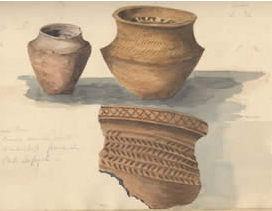
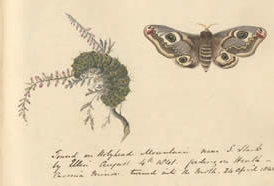
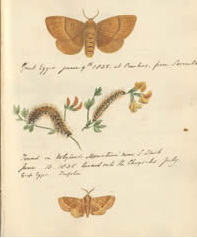
ARCHIVE OF THE MONTH: NOVEMBER 2017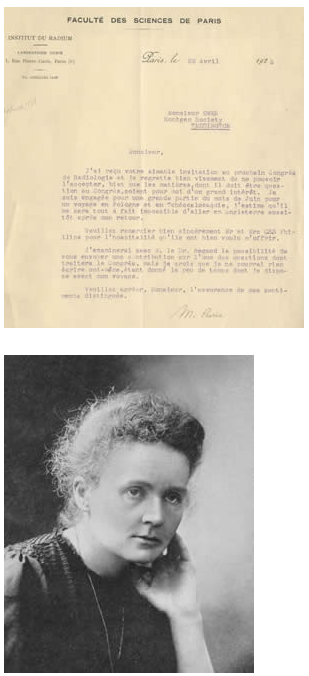
MARIE CURIE LETTER This letter signed by Marie Curie was found amongst the papers of Professor Edwin Augustus Owen a former student, and eminent member of staff at U.C.N.W. After studying at Bangor Edwin Owen proceeded to the Cavendish Laboratory to work on x-rays and radioactivity under J.J. Thomson. His discovery that ‘the mass absorption coefficient of a material for x-rays varied inversely as the fifth power of the atomic weight of the radiator’ is known as Owen’s Law. After 1918 he was able to devote his whole time to research into x-rays and atomic physics. In 1926 he was appointed to the chair at Bangor. Soon after his appointment he received the Rontgen Award and by the time of his death in 1973 he had published well over two hundred papers. It appears that this letter from Marie Curie was sent to Edwin Owen in 1925 before his staff appointment at Bangor. Loosely translated she regrets not being able to accept an invitation to the Congress of Radiology as she is committed to visiting Poland and Czechoslovakia in June. She offers to examine with Dr Regaud the possibility of sending a contribution on one of the issues the congress will deal with, but feels she cannot write anything herself, given the limited time before her trip. This "Archive of the Month" was created by Ann Hughes, Archives Officer
|
ARCHIVE OF THE MONTH: DECEMBER 2017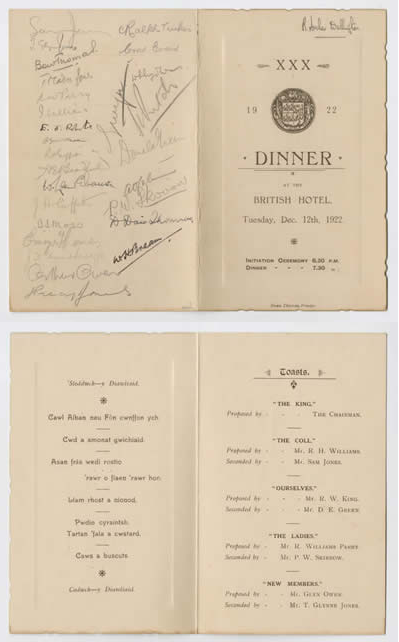
A University Christmas dinner menu, held on Tuesday evening, 12 December 1922 at the British Hotel, Bangor. After being told to Sit down, you rascals!, the guests enjoyed a feast of oxtail soup, periwinkles, spare ribs, roast lamb, Christmas pudding or apple tart with custard for dessert, and cheese and biscuits to finish; before being commanded to Get up, you rascals! for the toasts. Toasts were offered to the king, the college, themselves, the ladies and to new members. The poet R. Williams Parry proposed the toast to the ladies, and his signature is to be seen amongst those on the reverse of the menu. This "Archive of the Month" was created by Heledd Haf Williams, Archives Assistant |
ARCHIVE OF THE MONTH: JULY 2016
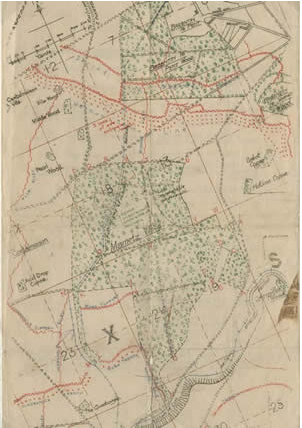
This month the world remembers the Battle of the Somme which took place between 1 July and 18 November 1916.
It was one of the bloodiest battles in history in which over one million men were wounded or killed.
Here is an image of an original 1916 map of Mametz Wood with notes on the terrain and enemy locations.
The Archives and Special Collections of Bangor University is responsible for the care and storage of the early College Records as well as archival and rare printed material. All of our manuscript collections are bound by one common factor, their relevance to the history, people and topography of North Wales. However, their subject areas are wide ranging and are of national as well as local historical interest.
ARCHIVE OF THE MONTH: OCTOBER 2016
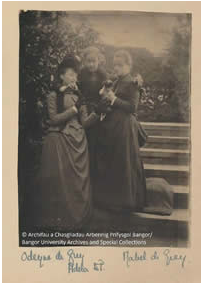
This photograph was discovered in a scrap book in the Penrhyn Castle collection of papers. The photographer has captured an informal moment in the life of Adela Douglas Pennant (1858-1955), who is standing in the middle of the picture with her arms around the shoulders of her companions and looking dotingly at the puppy held by Mabel de Grey.
If you’d like to read more about Adela, and see a Welsh poem dedicated to her, click here /archives/sugar_slate.php.en#updates
This “Archive of the Month” was created by Sarah Vaughan, our Sugar and Slate Project Archivist
ARCHIVE OF THE MONTH: NOVEMBER 2016
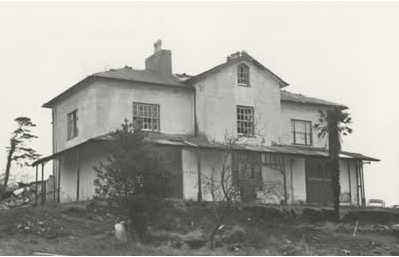
A photograph showing Belmont, home of Sir Henry Lewis, weeks prior to its demolition in 1967.
A prominent figure in Bangor’s history, Lewis, a flour merchant by profession, played a variety of roles in local politics, serving on the city council for thirty-three years, and acting as mayor from 1900-02.
Being a principled, socially conscious man, he was an active participant in the issues of his day. Nora, his daughter, was involved in the Suffragette movement. A fact which, no doubt, influenced Lewis in his decision to entertain one Mrs Pankhurst at Belmont, and host numerous garden parties in support of her cause – accounts of which can be read in his journal, held by the Bangor University Archives in their Belmont collection.
Having suffered a disrupted and often unhappy education in his boyhood, Lewis was acutely aware of the failings of the local school system, and its reformation proved to be one of the main preoccupations of his life. He served as chairman of the Bangor district elementary schools, chairman of the governing body of Friar’s school, and was one of the founders of the Bangor school for girls.
Chosen as secretary of the Committee formed to present the city of Bangor’s case as location for the University College of North Wales, Lewis played an integral role in the founding of the institution.

Sir Henry Lewis
When the original site of the university – the old Penrhyn Arms building – proved unsuitable to house both the arts and science departments together, the future of the university was called into question. Lewis, who recognised its social and cultural value, fought to persuade the city councillors not only to provide six acres of land, but to purchase an additional plot of land – the Penrallt site - from Lord Penrhyn, thus enabling the university to expand and ensuring that its future remained with the city.
This “Archive of the Month” was created by Callum Parry
ARCHIVE OF THE MONTH: DECEMBER 2016
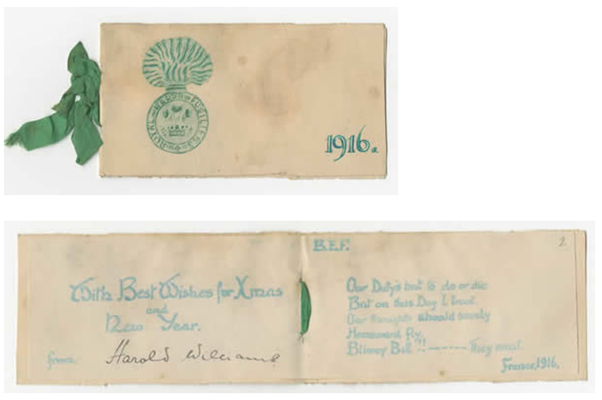
Christmas Card from Harold Williams to Major W.P. Wheldon of the 14th Battalion, Royal Welsh Fusiliers (1916)
Major W.P. Wheldon was born in 1879, Bronycraig, Ffestiniog, Meirioneth. He took charge of the Royal Welsh Fusiliers, 14th Battalion, 113th Brigade, 38th Welsh Division, where the 14th Battalion fought on the Somme between ,1916-1918.
The 14th (Service) Battalion, formed at Llandudno on 2nd November, 1914 by the Welsh National Executive Committee. In 28th April, 1915, the formation became the 113th Brigade, 38th (Welsh Division). They moved to Winchester for final training in August 1915, proceeded to France in December 1915. In July 1916, there was action at Mametz Wood on the Somme suffering severe casualties, and action in the Third Battles of Ypres in 1917, and action on The Somme in the Battles of the Hindenburg Line and Final Advance in Picardy in 1918, where Major Wheldon was received a gunshot wound to the left knee on the 7th November of that year. Demobilisation of the 14th RWF Battalion commenced in 1918, which was completed by June 1919.
He was Secretary and Registrar of the University College of North Wales from 1919 until 1933 when he was appointed Permanent Secretary of the Welsh Department of the Board of Education.
Major W.P. Wheldon received an award for Distinguished Service Order (DSO) in 1917. In 1948 he presented to the University of Wales Bangor, a collection consisting of war diaries 1916-1918 of the 14th (Service) Battalion, Royal Welsh Fusilliers, with a majority hand written by Major Wynn Wheldon, giving a day-to-day of the activities of the battlefield on the Western Front including reports on operations and actions, particulars of casualties, etc. He died on November 10th 1961, Prestatyn, North Wales.
The collection is available at Bangor University Archives, reference no: BMSS/7059-7060
This “Archive of the Month” was created by our volunteer, Louise Williams.
